#after 3 years of doing graphic design and dealing with fonts for ads the font for all the love is my fave omg
Explore tagged Tumblr posts
Text
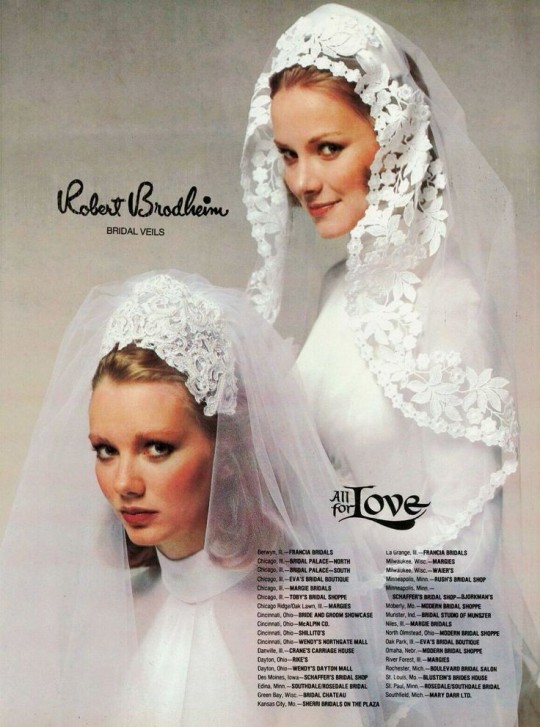
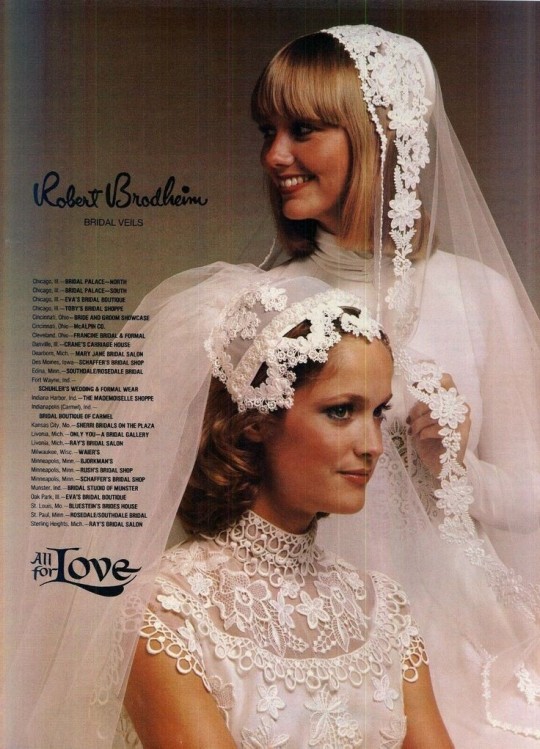
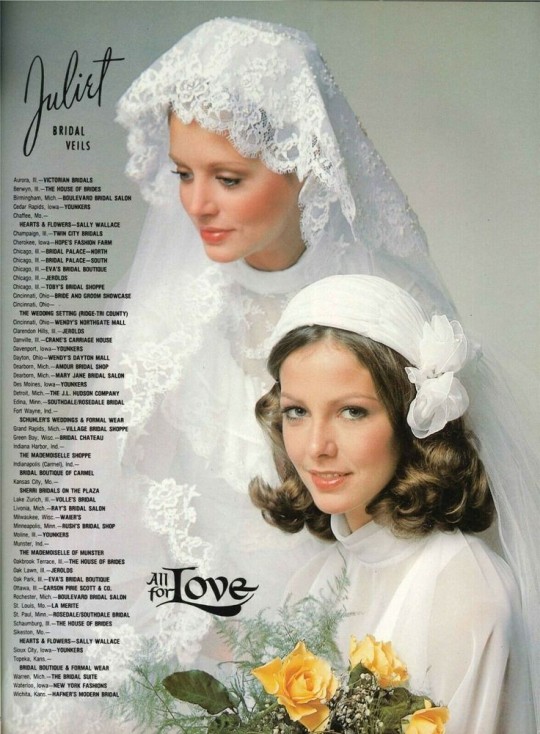
70s Bridal Veils
#70s#1970s#1976#1978#bridal veil#brides#fashion#ugh I love old wedding stuff#after 3 years of doing graphic design and dealing with fonts for ads the font for all the love is my fave omg
28 notes
·
View notes
Note
What is something you wish more people understood about you or if you prefer about your job or hobbies?
Hey Lovely!!
Ahhh, oh gosh SO much, honestly.
So I'm a graphic designer by trade, and an illustrator and freelance designer as my side gig, and my hobbies are art-related as well.
FOR SURE, I have to say that I wish people respected designers as the creatives we are. I've GENUINELY had clients who think all I do is hit a "design ad" button and BOOM it's done, and don't think they should have to pay me because – and this is ONLY because I've been doing this for 20 years – I can finish a print ad in under an hour, and booklets under 5, not taking into account the AMOUNT OF CHANGES and STUPID things I have to talk people out of to not make them look bad.
Some other things:
Microsoft Word is not a design program. I HATED this when I worked at the Paper. Good fucking LORD the amount of times I've had to rebuild an ad because the client couldn't resize it themselves and couldn't understand why if they moved something everything fucked up is astounding.
Canva is good for mocking up design, but I'm sorry, you're NOT a designer if you learned design in Canva. I know it sounds gatekeepy and pretentious, and I am sorry about that, but even with Canva you need to know SOME principles of design to get something appealing out of it. A designer, after-all, MADE your templates you're working from. We're everywhere. We're a silent bunch that's under-appreciated. You're never going to get the precision and nuance and a proper eye that you'll get from a designer. Sure you'll get quick and dirty designs, work fine for socials, but I LOATHE when people send me shit they made in Canva that I have to, once again, rebuild because they can't figure out how to resize in Canva and complained to me that Canva isn't making it look nice when they export it (to be fair, that's a them problem, the tools ARE there for you to do that stuff)
When your designer tells you one thing and you're trying to push for another, your designer is trying to save you the embarrassment of your "vision". We know what we're doing. We spend most of our days knowing market trends and what will make eyes go to your advertisements and products.
Strokes don't fix everything.
I can't read your mind. PLEASE, if you wanted an element there from the start, you need to tell me, and not tell me I'm a fucking moron who should have guessed by the blobs you drew on a napkin as your layout.
Fuck AI; I see the benefits of it for smaller things like content aware fill to add a bit more height to a stock photo I'm using, or the smart-select to route a photo faster, but literally that's all I see useful for it.
I know there's loads more I'm missing, but I've seen SO much that I'm numb to a lot of things and tend to just "autocorrect" stuff without even thinking anymore.
I love my job though, I really do. The joke in my industry is that "I get paid to play in Photoshop all day long" and there is some truth to it after doing this for nearly 20 years. But I wish people would understand that we are trained professionals who want to make them look good, and to do that I need time and money. We are literally background characters for the main protagonists, and the pay isn't great unless you're really lucky (which I am, but it took me 12 years to finally get in where I am), and I wish people would stop saying my job is easy.
It literally is not. Think of it as retail, but you deal with the same people every single day nitpicking the tiniest things over and over again despite you telling them countless times that 6pt font is probably the smallest you should go, but no 3 pt must be on this ad.
Anyway. 🙃
My favourite though is Layout Design. I love designing the booklets and mailers we do at my job, because I get to be super creative. My boss is pretty lenient with me, since "you've been here longer than all of us, you know better than me how this works", so I get to have fun.
Thank you for this question :) And gonna promo myself here, if anyone ever needs design or layout services, I'm your gal :)
#steph replies#about me#graphic design#ask me anything#i love answering questions about my profession#because it's literally the only thing i'm good at#i pride myself on my skills
26 notes
·
View notes
Text
David Edward Byrd: Inspiring “Wowie-Zowie” for Over 50 Years
With a career that spans over half a decade during the art, music and technological revolution, David Edward Byrd has developed iconic posters and illustrations associated with the best of the rock and theatre era.
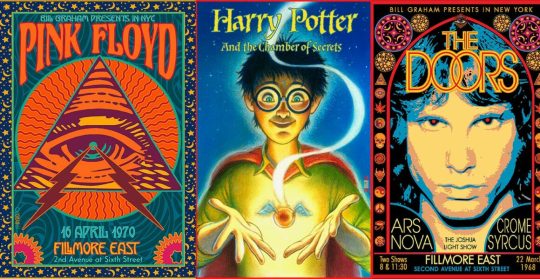
David has been creating posters since his days at The Fillmore East in NYC where he created the famed 1968 Jimi Hendrix poster now in the collection of MOMA, NYC. As well, he created the poster for The Rolling Stones 1969 Tour, TOMMY by The Who, The Grateful Dead, & the legendary 1969 Woodstock Poster. He quickly moved on to Broadway, where he created images for Follies, Godspell, Jesus Christ Superstar, Hot L Baltimore, The Magic Show, & Little Shop of Horrors amongst many others. He was Sr. Illustrator at Warner Bros. Consumer Products for 12 years where he worked on everything from Bugs Bunny to Harry Potter. He has had Retrospective Shows in Los Angeles, New York & Seattle. He now lives in the Silver Lake area of Los Angeles with his husband of 39 years, Jolino Beserra, a renowned Mosaic Artist.
ORDER A CUSTOM ILLUSTRATION
Q. Any reason why you chose to illustrate for 60s rock bands in particular?
David Edward Byrd: I was the poster artist for the Fillmore East in NYC from its opening on 8 March 1968 to 27 June 1971 when it closed for good. At this same time, I was also creating posters for the Broadway Theatre (“Follies��, “Godspell”, etc.). As Rock Posters have a much higher profile than Theatre Cards, I chose that area to illustrate. Also, Theatre is about THIS play right NOW, while 60s Rock is about 60s Rock in general.
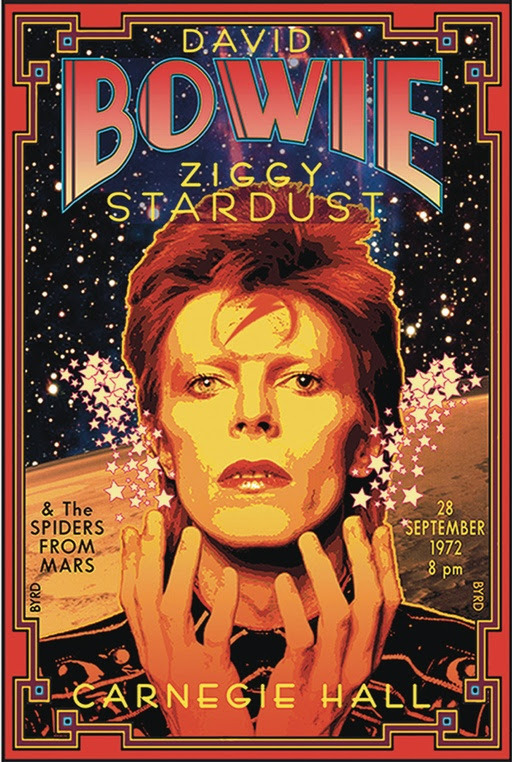
Q. What kind of changes do you see when you compare the posters that were created in the 60s to the ones that are created today?
David: The rock poster artist EMEK is a great example of the younger generation’s expertise in the art form (see “Coachella”). Whereas, David Singer is an example of the “Old Garde” moving on to create new imagery (see “Moon Alice”). I still create more East Coast imagery, I think . . .

Q. One of your Hendrix posters is ranked among Billboard’s Top 10 Rock Posters of all time. What was your thought process/ inspiration while you created the poster?
David: Before coming to Manhattan in 1967 I had worked as a freelance Architectural Draughtsman, so I was familiar with the tools of that trade, and thus I decided to apply this craft to the 1968 Jimi Hendrix Experience poster. I created Jimi’s & his band-mates hair using a hexagonal grid with small circles on the grid representing cosmogenic pixels that one might perceive after ingesting certain popular chemicals of the time (see “Acid”). Each small circle was drafted with a drop-bow compass on the center point of the hexagonal grid.
A laborious process, but worth the time . . .
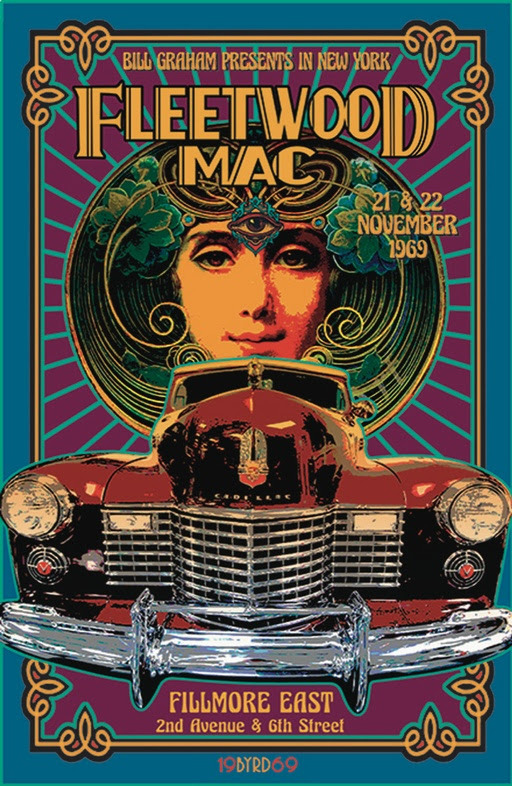
Q. The poster you created for the Woodstock Festival was rejected because it was too risque in 1969. Do you think it would have received a different response if it was designed today?
David: Absolutely — an entire sexual revolution has occurred over the last 50+ years. Ironically, the nude female in the center of the poster was copied from the 1847 painting “La Source” by Jean Dominique Ingres, which seemed a perfect symbol for a poster representing “An Aquarian Exposition” (the “Water Bearer”). But the Wallkill City Council thought otherwise (exposed breasts & pudenda a no-no). I had a similar experience with the NY Times treatment of my “Tommy at the Metropolitan Opera” full-page ad in the Sunday Times, which featured a nude Tommy rising into Pinball Heaven — the Times editor chose to paint a crude Black Marker Jockstrap over his very modest genitalia, alas.
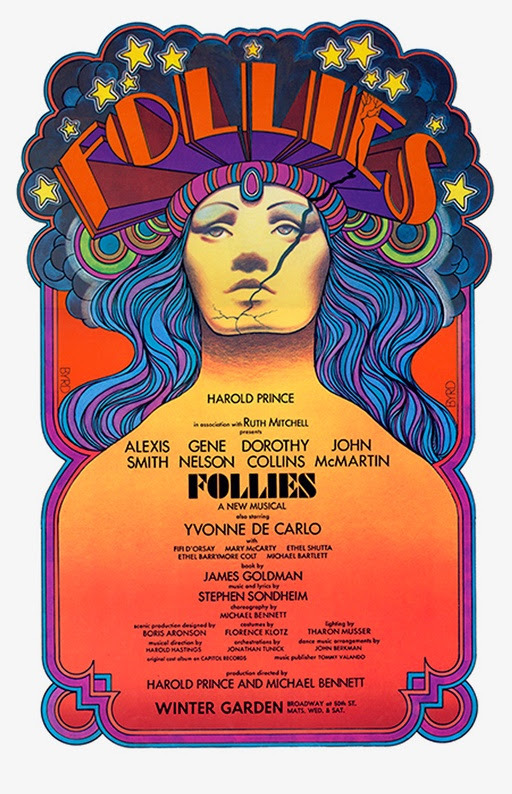
Q. What would you describe interacting with so many rock artists like? Any favorites whose company you enjoyed?
David: Manhattan & San Francisco are light-years apart both culturally & artistically. The West Coast artists created Psychedelia and Neo-Nouveau and are due to the many encomiums they have received for this. David Singer and I were friends and we traded posters. David created the most Fillmore West posters (60 total) of any artist on the planet. For me, his posters are the Apex of the West Coast work. Victor Moscoso influenced my design sense with his vibrant close-value posters (see “Sopwith Camel”) and continues to do so today.
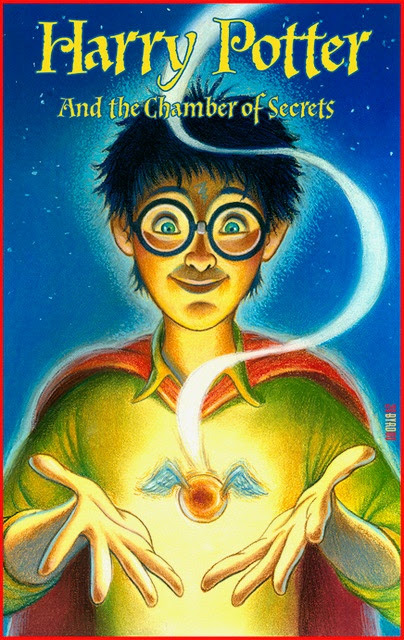
Q. Can you describe your experience at Warner Bros. How were those 12 years different from working elsewhere?
In 1991, I took the position of Senior Illustrator at Warner Bros. Creative Services, which I held till 2002 • Besides creating illustrations, backgrounds and style guides for all the Looney Tunes & Hannah-Barbera characters, I got to create commemorative plates for The Franklin Mint, souvenir posters for the Batman series of films, style guides for feature films such as Space Jam, The Wizard of Oz, and television shows such as Friends, The Cartoon Network and Scooby-Doo • My department was responsible for the Bugs Bunny Postage Stamp, the first cartoon character on a U.S. Postage Stamp • I created special signed pieces for The WB Studio Stores Galleries based on The Masterpiece Series style guide art that I painted in 1999 • I also did a great deal of work on the style guides for two of the Harry Potter films: Harry Potter & The Chamber of Secrets and Harry Potter & the Prisoner of Azkaban.
One rarely sees the Graphic Collections of major museums on display, so being part of a museum collection as a poster artist does not put one on the creative map, so to speak. But it is a nice thing to tell one’s sweetheart.
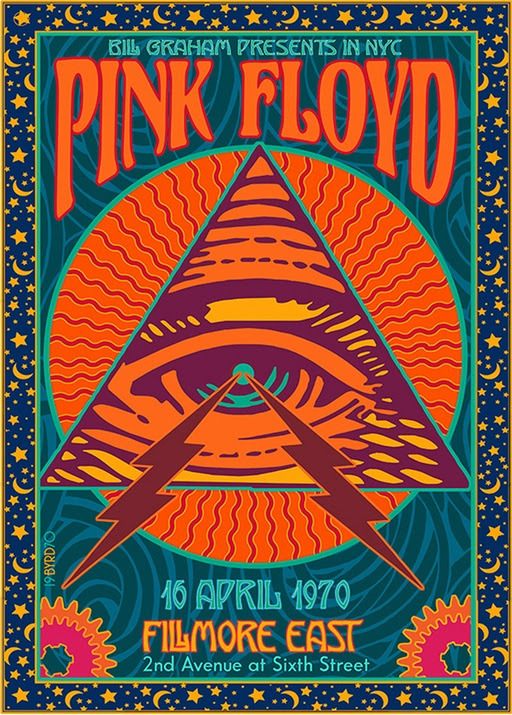
Q. Your work is displayed in 23 museums at the moment, including the Louvre in Paris. Do you find it a rare accomplishment considering you are an illustrator and not a painter?
As I have often said if I had remained a painter I probably would not be in any Museum at all. But this is not for me to know. One rarely sees the Graphic Collections of major museums on display, so being part of a museum collection as a poster artist does not put one on the creative map, so to speak. But it is a nice thing to tell one’s sweetheart . . .

Q. From Fillmore East to Broadway to Warner Bros, how has your style evolved over the years?
My art-chops improved immensely in the last 20 years. I hope it is somewhat evident. My work was hit-or-miss in the beginning but things have gotten better of late.

Q. Can you name some of your favourite posters which you have worked on?
“FOLLIES” 1971
“HENDRIX EXPERIENCE” FE 1968
“BOWIE” Carnegie HALL 1972
“QUEEN” 1st Tour 1974
“PRINCE” DNA 2013
“TOM PETTY” 1980
“NY DECO EXPO” 1974
LED ZEPPELIN FE 1969
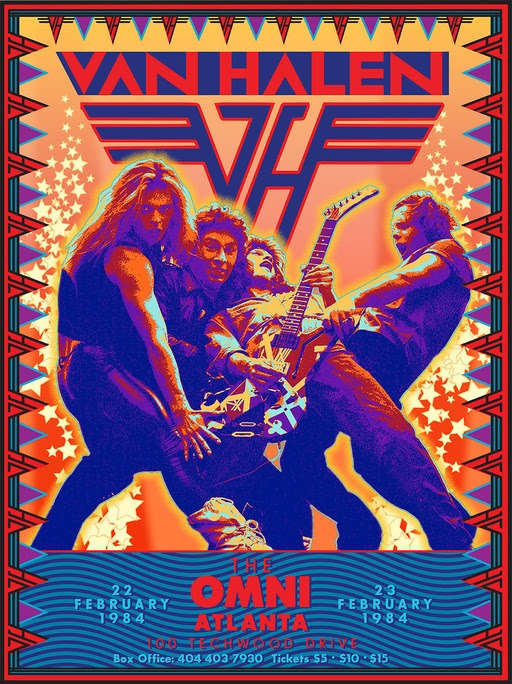
Q. What is your process like when coming up with an illustration or a poster?
1.) Collect Reference & inspiration in Folder. 2.) Create rough pencils for scanning. 3.) Collect possible Fonts. 4.) Build rough designs on Mac 5.) Choose 1 main color and build up from that 6.) Proof printing
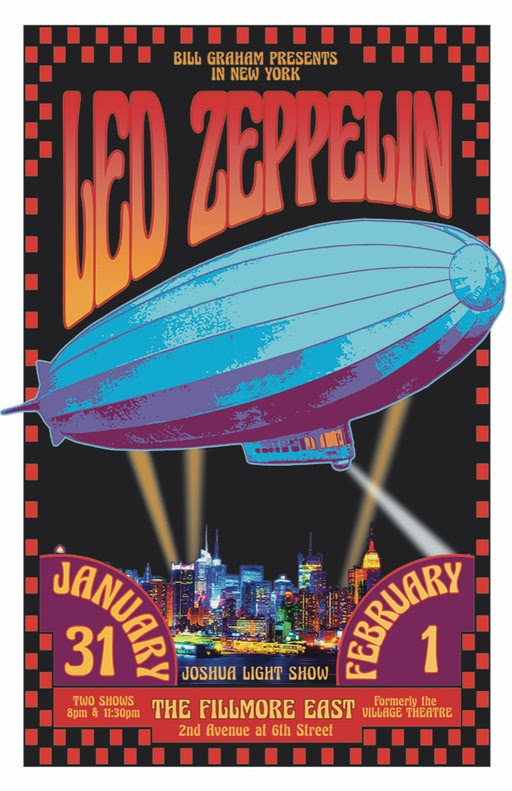
Q. What software do you use to create your illustrations?
ADOBE SUITE (PhShop; Illustrator; InDesign) + Typestyler
Q. Lastly, what do you always aim to achieve through your illustrations?
Eye-Fun • Immediacy • Gotcha • Who-Is-This-Guy? • Wowie-Zowie
3 notes
·
View notes
Text
ZSUITE REVIEW – BECOME A PRO FROM SCRATCH
Generally, zSuite OTO is a 4-in-1design app containing Youzign, Gifzign, Mockzign and Logozign that enables anybody to create engaging and stunning Graphics, InfoGraphics, Logo, Gif, Mockup, many more... from scratch. Since zSuite is niche-independent so it's going to provide you with unlimited choices for marketing campaigns, introducing a new product or promoting new.

Another fantastic part is, the industrial License included enables you to be a real freelancer by supply professional design service and charge hundreds dollars. Such a possible land, is not it?
So, what's inside these 4 design apps that make zSuite stick out? Go on reading and you'll know.
Martin Crumlish is the name behind this product. His name is really famous for showing up on leaderboard so frequently. Apart from being a gifted digital marketer, Martin also specializes in creating software helping people deal with traffic generation, designing website,... Some of his previous products that made thousands of sales: Social Mobi Surveys, Social Mobi App, WP Dollar, SocialNeos,...
ZSuite was born after 4 years exploring and generating by Martin with his partners Magnus and Bertand. It passed through several tests through the years and perfected.
Besides including 4 strong design apps, zSuite is filled with other awesome benefits. Let's dig into these 4 software first then I will show you the rest.
App 1: YOUZIGN
Use Youzign in form of:
Youzign online platform
Youzign Desktop app
Youzign WordPress Plugin
Youzign Android and iOS mobile programs
Features inside Youzign:
Unmatched drag n drop interface
Borders and shadows
60 design formats and preset sizes
Huge pool of templates, never battle for inspiration again
Supports any languages on Earth
Share designs with any other user
Smart guides that will assist you maintain straight lines and design properly
100s of built-in high resolution images and icons sorted in categories, such as arrows, backgrounds, patterns, buttons, play buttons for videos, mascot characters, and much more we are adding graphics every day.
One-click wallpapers, tee-shirt designer
Background removal
Instant preview technology
Create from scratch or start with a picture
Free access to Youzign market, easily sell your designs
All design formats constantly monitored and updated
Integrated into 50+ top marketing programs
Organise your designs in folders, create unlimited folders
Save designs as templates and re-use unlimited times
Millions of integrated copy-right free pictures
Retrieve your designs on your favourite apps with Youzign API
App 2: GIFZIGN
Gifzign is a Desktop app for PC and Mac that helps you to:
Turn any video on Youtube, Vimeo or your personal computer to a GIF in just a few seconds
Record a video from your camera or screen and turn it into a GIF
Customize your GIFs with text and graphics
Add other special effects like looping, instagram-like filters, and more
Produce cinemagraph with any uploaded, cloud video or recorded video
Select different GIF Player styles with dynamic behaviors
Select different frame mockups
App 3: MOCKZIGN
Mockzign is a Desktop app for PC and Mac that helps you to:
Simultaneously create 100+ mockups using a single picture add
100+ different mockup templates
Create notebook mockups, apparel mockups, tablet mockups, desktop mockups, telephone mockups and more
Easily edit and edit your mockup pictures; resize, crop or rotate to fit your display
Upload an image from your computer or beam from any place on the internet with one click
Produce mockup that are prepared for printing and also optimised for the internet
App 4: LOGOZIGN
Logozign is a Desktop app for PC and Mac that helps you to:
Create unlimited logos on your own and clients the easy way
Layout with No specific skills needed
Immediate real-time downloadable logo mockups
Monogram features included
Mascot features included
Modern icon library with millions of icons
Use different logo styles and containers
Choose Modern design criteria
Upload and use your own fonts
Save your logo project and continue editing later
Upload SVG files and continue editing them with Logozign to Improve your logos
Last but not the least, in order to offer you a decent with experience, the team will bring you some other amenities
Commercial license is included so that you can sell your designs and keep 100% profits
YOUSTART Video Training Course: Everything you need to know about getting started with Youzign, visual advertising and launch your brand online even if you have zero design skills.
24/6 Support: there should be some time you battle hard to manage a couple of tasks, then don't hesitate to contact for support
30-day money back guarantee
Weekly training webinars: Join the zSuite for one hour of free training each Friday. Plus instant access to nearly 2 years (100+ webinars) value of recorded training.
Now, let's take a look at some people's opinion about these 4 apps:
Prior to coming to zSuite, perhaps you must use these 4 software instead. All take you monthly recurring fee, at $73 a month! Oops! This price is not certainly profitable for business owners who has low-budget, a newbie or a startup. That's why you should seriously think about getting zSuite, meaning using a access to 4 design apps with the same outstanding features and the cost is really affordable. $67 one time payment for forever using.
The second reason is, you know Upwork -- the most significant labor market for freelancer?
Companies, Organizations, Entrepreneurs are hungry for these kinds of designing service. The demand keeps growing all of the time. For people who don't need to do dead-end job , you can try getting a professional designer working at home. Since zSuite has all types of necessary, niche-independent templates and design together with complete customization, it enables you to develop your imagination from zero and make money from it.
HOW TO GET IT TO WORK?
You need to be curious how it performs in action. So, please listen to my next illustration on a few basic design
Building a LOGO WITH LOGOZIGN
There are 4 sections You Need to notice when creating a Logo: Name, Slogan, Symbol and Container
Step 1: Name your own Logo, and make a Slogan
Step 2: Upload SVC in Symbol segment and make some adjustments
A few alterations on text: Size; Font, Spacing, Color
You have a stunning Logo like below:
Step 3: Save and Download
You may also save Transparent version when clicking on it in Container section.
Here is the main DASHBOARD
Step 1: After you log in, hit the"NEW DESIGN" button to begin create a new one
As you can see, apart from Facebook, you have the ability to create impressive cover for virtually all of the social platforms such as Twitter, Youtube, Instagram, Pinterest,...
Step 2: Designing procedure
There are 4 sections: Background, Graphics, Text, Filter, Upload
Search Graphics on Pixabay based on key word
After adding text and correct it, you can also insert your designed logo on the cover
Step 4: Save and Download
Building a GIF AD USING GIFZIGN
Step 1: Choose from the GIF library or decide to upload your own/ record a new one
Step 2: Make a few adjustments
Upload your intended logo
Adjust the length of the GIF
Go to Filters if you want to test what kind of color is suitable
Step 3: Save the GIF and it will appear on the dashboard so that we can preview it
Step 1: Choose a kind of mug you would like to design
Step 2: Click on"PLUS" button that I highlight on the step 1 picture to upload your intended logo
Step 3: Hit download on the right corner
Above all, zSuite also instructs carefully on how to upload all these logos, covers or GIF in your Facebook or other social media network. A summary video for you to recap everything you can do with
To be clearer, please watch the DEMO VIDEO under:
youtube
https://uprafficoto.com/
1 note
·
View note
Text
ZSUITE REVIEW – BECOME A PRO FROM SCRATCH
ZSUITE REVIEW -- WHAT IS IT ABOUT?
Normally, zSuite OTO is a 4-in-1design program containing Youzign, Gifzign, Mockzign and Logozign that allows anyone to create stunning and engaging Graphics, InfoGraphics, Logo, Gif, Mockup, many more... from scratch. Since zSuite is niche-independent so it's going to provide you with unlimited choices for marketing campaigns, introducing a new product or promoting brand.

Another fantastic part is, the Commercial License included enables you to be a true freelancer by supply professional design service and charge hundreds dollars. Such a possible land, isn't it?
So, what's inside these 4 design programs that make zSuite stand out? Go on reading and you'll know.
ZSUITE REVIEW -- ABOUT THE CREATORS
Martin Crumlish is the name behind this product. His name is truly well-known for showing up on leaderboard so frequently. Besides being a gifted digital marketer, Martin also specializes in creating software helping individuals deal with traffic generation, designing website,... Some of his previous products that made thousands of sales: Social Mobi Surveys, Social Mobi App, WP Dollar, SocialNeos,...
ZSuite was created after 4 years researching and generating by Martin together with his partners Magnus and Bertand. It passed through several tests through the years and perfected. They all hope to provide you with the ultimate design package
Besides including 4 powerful design programs, zSuite is filled with other amazing benefits. Let's dig into these 4 applications first then I will show you the rest.
App 1: YOUZIGN
Use Youzign in form of:
Youzign online platform
Youzign Desktop program
Youzign WordPress Plugin
Youzign Android and iOS mobile programs
Features inside Youzign:
Unmatched drag n drop interface
Borders and shadows
60 design formats and preset sizes
Huge pool of templates, never struggle for inspiration again
Supports any languages on Earth
Share layouts with any other user
Smart guides to assist you maintain straight lines and design correctly
100s of built-in high resolution graphics and icons sorted in categories, such as arrows, backgrounds, patterns, buttons, play buttons for videos, mascot characters, and much more we are adding graphics daily.
One-click wallpapers, tee-shirt designer
Background removal
Instant preview technology
Create from scratch or start with an image
Free access to Youzign market, easily sell your designs
All design formats constantly monitored and upgraded
Integrated into 50+ leading marketing programs
Organise your layouts in folders, create unlimited folders
Save layouts as templates and re-use unlimited times
Millions of integrated copy-right free images
Retrieve your layouts on your favourite apps with Youzign API
App 2: GIFZIGN
Gifzign is a Desktop program for PC and Mac that helps you to:
Turn any video on Youtube, Vimeo or your computer to a GIF in just a few seconds
Record a movie from your camera or screen and turn it into a GIF
Customize your GIFs with text and images
Add other special effects such as looping, instagram-like filters, and more
Produce cinemagraph with any uploaded, cloud video or recorded video
Select distinct GIF Player styles with dynamic behaviors
Select different frame mockups
App 3: MOCKZIGN
Mockzign is a Desktop program for PC and Mac that helps you to:
Simultaneously create 100+ mockups using a single picture add
100+ different mockup templates
Create notebook mockups, attire mockups, tablet mockups, desktop mockups, telephone mockups and more
Easily edit and customise your mockup images; resize, crop or rotate to fit your display
Upload an image from your computer or beam from any place on the internet with one click
Produce mockup that are prepared for printing and also optimized for the Online
App 4: LOGOZIGN
Logozign is a Desktop program for PC and Mac that helps you to:
Create infinite logos on your own and customers the easy way
Design with No specific skills needed
Immediate real-time downloadable logo mockups
Monogram features included
Mascot features included
Modern icon library with millions of icons
Use different logo styles and containers
Choose Modern design standards
Upload and use your own fonts
Save your logo project and keep editing afterwards
Upload SVG documents and keep editing them with Logozign to add to your logos
Last but not the least, in order to offer you a decent with experience, the team will bring you some other amenities
Commercial license is included so that you can sell your layouts and keep 100% profits
YOUSTART Video Training Course: Everything you will need to know about getting started with Youzign, visual marketing and launching your brand online even if you have zero design skills.
24/6 Support: there should be some time you struggle hard to handle a few tasks, then feel free to contact for support
30-day money back guarantee
Weekly training webinars: Join the zSuite for one hour of free training every Friday. Plus instant access to nearly two years (100+ webinars) value of recorded training.
Now, let us take a look at a few people's opinion about these 4 apps:
Prior to coming to zSuite, perhaps you must use these 4 applications instead. All take you monthly recurring fee, at $73 a month! Oops! This price isn't certainly profitable for business owners who has low-budget, a newbie or a start-up. That's why you need to seriously think about getting zSuite, meaning using a access to 4 design programs with the same outstanding features and the price tag is truly affordable. $67 one time payment for forever using.
The next reason is, you know Upwork -- the most significant labor market for freelancer?
Companies, Organizations, Entrepreneurs are hungry for these sorts of designing service. The demand keeps growing all the time. For those who don't want to perform dead-end occupation anymore, you can try getting a professional designer working at home. Since zSuite has all kinds of necessary, niche-independent templates and design together with complete customization, it enables you to develop your imagination from zero and earn money from it.
HOW TO GET IT TO WORK?
You must be curious how it performs in action. So, please listen to my following illustration on a few fundamental design
Building a LOGO WITH LOGOZIGN
There are 4 sections you have to notice when creating a Logo: Name, Slogan, Symbol and Container
Step 1: Name your Logo, and make a Slogan
Step 2: Upload SVC in Symbol section and make some alterations
A few alterations on text: Size; Font, Spacing, Color
You have a gorgeous Logo like below:
Step 3: Download and Save
You can even save Transparent variant when clicking on it in Container segment .
MAKING FACEBOOK COVER WITH YOUZIGN
Here's the main DASHBOARD
Step 1: After you log in, hit the"NEW DESIGN" button to start create a new one
As you can see, apart from Facebook, you have the ability to create impressive cover for virtually all the social platforms such as Twitter, Youtube, Instagram, Pinterest,...
Step 2: Designing process
There are 4 sections: Background, Graphics, Text, Filter, Upload
Search Graphics on Pixabay based on keyword
After adding text and correct it, you can also insert your designed logo on the cover
Step 4: Download and Save
Then you can download in form of PNG; PDF; JPG
Building a GIF AD USING GIFZIGN
Step 1: Choose from the GIF library or Opt to upload your own/ record a new one
Step 2: Make a few adjustments
Upload your designed logo
Adjust the length of the GIF
Go to Filters if you want to test what kind of color is suitable
Step 3: Save the GIF and it will appear on the dashboard so that we can preview it
Making Mockups (for MUG) with Mockzign
Step 1: Choose a kind of mug you want to style
Step 2: Click on"PLUS" button that I highlight on the step 1 picture to upload your designed logo
Step 3: Hit download on the right corner
Above all, zSuite also instructs carefully on how to upload each of these logos, covers or GIF on your Facebook or other social networking network. A summary video for you to see everything you can do with
To be clearer, please watch the DEMO VIDEO under:
youtube
https://uprafficoto.com/
1 note
·
View note
Link
Top 25 eye-catchy business card design trends for 2021
Business card design is a real brand opportunity! Check out the top business card design trends for 2021 that will tie your brand together.
The days of generic business or contact cards are long gone. Today, your business card needs to sell what you are selling and significantly impact the viewers’ minds. Instead of thinking of your business card design as an afterthought — think of it as an opportunity to showcase your brand.
Your business card design is like a handshake that leaves potential clients impressed and inclined towards choosing you over the rest.
A powerful yet simple and easy to read business card portrays you as a professional who is savvy and tasteful. It also shows potential leads that you are someone to do business with.
A great business card design is your calling card as an entrepreneur, quite literally. A well-executed business card design gives insight to people about your approach towards the business and leads them to think that if you can create an impressive business card, wonder what you accomplish for your clients. Each year comes with some great new business card design trends, with each trend spiking a wave of inspirations for many designs to come.
Here we have 25 eye-catchy business card design styles all set, ready, and making the rounds for 2021.
These designs or their adaptations are bound to impress your clients:
1. Understated and Tasteful
When it comes to design, “Less is More” is a golden rule that always works. Appropriate and tasteful use of fonts, colors, white space makes the understated look a sellout. More companies are going with this clean look in order to communicate the necessary details such as name, phone number, email id, website, etc. while maintaining a sophisticated look in-line with their brand personality.
Image Source: plantmade
2. Heavy and Strong Cardstock
Business owners often focus on a handful of aspects while designing a business card such as the Font, Colour, Layout, etc. Printing and Cardstock GSM are a few crucial features that are often overlooked in searching for a great business card design. Using the right cardstock can be instrumental in setting the right tone for your brand personality. Heavy and thick cardstock translate that your business stands for substance and quality, two essential qualities customers look for. Most businesses prefer a 24 point cardstock to create a lasting impression for their business. Ask your business card maker for some cardstock samples before choosing the one that suits your needs and meets the budget requirements.
Image Source: Publicide
3. Die Cut Business Cards
Each day millions of business cards are exchanged worldwide, and most of them get lost amongst the piles of cards in a desk drawer, never to be seen again. Choosing a shape different from the generic rectangle for your business card gives it a finding chance. You can enhance your logo’s outline by adding it to the card design’s edge or even create a die-cut for the company’s initials. These add flair to the design and make the business card and, therefore, the business memorable. In case you do not wish to opt for a dramatic card shape, you can choose a portrait-style business card instead of the traditional landscape design.
Image Source: nvision-that
4. Big and Bold Typefaces
Companies usually avoid using bold designs, fearing it would come as too strong. In 2021, this trend seems to be changing, and more organizations are adopting the mantra of “Bold. Strong. Exceptional.” The key is to ensure that the card design’s solid colors are the same as used across all marketing tools such as brochures, posters, etc. You should use the same typeface being used in all other marketing campaigns to reinforce brand identity.
5. Rustic and Natural style
Vintage was the new look in 2020. What started as a somewhat whimsical theme trend for weddings and furniture has made its way to graphics as well. Today, companies are looking for a more rustic and natural style for their business cards to portray long-standing relations.
Image Source: autosmasestilo
6. Interactive Business Card
Business cards used to be a one-way communication platform where the business owners would share their details with prospective clients. The use of interactive design is one of the business card design trends which has reformed this. In 2019, you will find a lot of unique designs that are great for user engagement. Such designs make your business memorable for years to come if appropriately executed.
Image Source: feeldesain
7. Focus on Branding Elements
It is always recommended to keep in mind the various surfaces where you will be using your brand’s focal elements such as your logo. Hence as you set out to create a logo, consider how it can enhance a business card design. But in case you already have a logo design ready, and in place, you can add it cleverly on your business card to make a larger impact. Companies are now opting for designs with the branding elements as the star.
8. Minimalist Design
Minimalist design trends have been gaining popularity not only for business cards but also when it comes to other marketing tools such as a logo or Email Signature. The clean and simple design makes it easier for users to focus on the relevant details such as your contact information, company details, etc.
Minimalistic design settings also provide ample area to add clear and modern fonts in various settings. The designer can also add a single bright element to introduce intrigue or keep the design simple based on the client’s needs.
Image Source: Creative Market
9. Bright Painted Edges
Edges were one of the most underutilized spaces of a business card design. But with the new trends of using a single color and bold typefaces, painted edges have emerged as the latest business card trends. Bright edges give a business card a distinctive look. It creates a unique visual element as compared to traditional business cards.
Image Source: brokeradvocate
10. Artsy and Fashionable
The audience has a significant influence on the execution of a companies design. For instance, the first step you take towards building a brand is designing a logo, and the very first question a logo designer raises is the kind of audience you are targeting.
Nowadays, companies have stepped out of the shadows of traditional cards that all looked the same, no matter the brand personality, product, or even the industry. Now, if you are dealing in areas such as fashion, home furnishings, handicrafts, etc., you can create your business card to mirror the tastes and preferences of your audience.
Image source: Zcache
11. Transparent and Clear Business Cards
The trend of using transparent and clear materials to design business cards is a breath of fresh air in the world of conventional business cards. Most of the business cards come off as similar, while clear cards have the potential to shine in the limelight. You can choose to keep your business card as entirely transparent or partially based on your design preferences.
Image source: Pinterest
Image Source: Cleverhippo
12. Recycled Cardstock
Companies are becoming environmentally friendly each year and looking for more ways to give back to nature. This also sends a powerful message to the audience that you care about the ecosystem and indulge in positive impact activities. Recycled printing materials are, therefore, no longer limited to paper bags and notepads in 2019. Now business cards printed over recycled cardstock are gaining popularity because of the environmental benefit as well as the potential to connect with the audience emotionally.
Image Source: reubenmiller.typepad
13. Plantable Business Cards
What’s better than a business card that has contributed to the environment by being recycled? A business card that can be planted! The trend of plantable business cards is growing on people. The material is textured recycled paper with seeds embedded below the surface. All that needs to be done once the card has served its purpose is to tear it and bury it. This process forges a bond with the customer making your brand memorable for them.
Image Source: Stationary Scoop
14. Glow in the Dark
Who doesn’t love the glow in the dark elements? Business cards need not be serious; adding fun or humorous features can go a long way in adding to the brand’s memorability. This trend is undoubtedly staying with the companies for a while since more companies are opting for mirroring their brand personality in their marketing campaigns.
Image Source: behance
15. Tearable Cards
A client will remember the cards which are not only relevant but also involves them taking action. For instance, this business card for a divorce lawyer can be torn in half and shared by both the parties. This would leave a lasting impression on the clients more than a conventional business card. The key is to note that both parts of the card have the contact details to still serve the purpose, even after being torn.
Image Source: Pinterest
16. Multi-Tool Business Card
In 2020, companies were focused on lasting impressions. Multi-tool business cards provide users with small tools that can be used for performing some useful functions. Imagine how much impact it will make on your clients if your business card, instead of being tossed aside in a pile, becomes a keepsake for them.
For instance, this business card can also be used in minor issues and maintenance of your bike. Apart from setting you apart from the crowd, such designs also help you convey your audience that you care about their convenience and needs.
Image Source: sevenwaysto
17. Business Card that is also a Seed Packet
Another alternative to using a seed paper that eventually gets destroyed is creating a small sleeve that carries seeds. This would ensure that there is a contribution to the environment, and the client will also remember your brand for a long time.
Image Source: Pinterest
18. Cards made up of Fabric instead of Cardstock.
When it comes to using recycled materials in the marketing, it is not limited to just paper. The latest trend for business cards, especially in the furnishings and fashion industry, uses fabric swatches from the leftover cloth to create attractive business cards. These industries run on creativity, and using fabric business cards provides a brand new avenue to showcase even more creativity.
Image Source: Pinterest
19. Unusual Materials
Using unusual material for your business cards automatically provides an added advantage over everyone else. It makes your business card stand out and add an innovative touch to your marketing campaign. As you hire a freelancer or a graphic design services agency, sit with them and discuss at length how some unconventional materials can be utilized for your business cards. You can also use an online graphics tool such as Designhill and create your own simple design, which can then be printed on the surface you want for your business card.
Some yoga studios consider creating business cards with rubber just like a yoga mat. A cheese store creating a business card shaped like a cheese grater and a protective sleeve is another example of how non-traditional materials can create some powerful and unique business cards while showcasing brand philosophy.
Image Source: Jemome
20. Edible Cards
Edible business cards are great for companies offering edible items. The business card can be your product samples such as chocolate, cookie/cracker, meat, or fruit leather with your information engraved on the surface. This sparks maximum engagement with the customer and ensures that they remember your business for a long time. Add to that the intrigue of trying more of the merchandise once they have had the first taste, and you have a lead conversion. The key is to make sure that the item has a longer shelf life and would be welcomed by the masses.
Image Source: Pinterest
21. Sample Business Card
Business cards serve the purpose of telling the prospective clients more about your business, sometimes even when you are not present there physically. There is no better way of introducing your company than serving a sample of your product along with your business card. For instance, this business card also doubles up as a teabag, which helps users sample the tea they offer.
Image Source: Pinterest
22. Sliding Business Cards
Sliding business cards employ the effect of movement to capture users’ attention. It adds a playful or even whimsical element to the business card. The user can slide one part of the card to view contact information, or the sliding action can result in an implied message for the client.
For instance, in this card design for Caroline Boisvert, a training and development consultant, designer Michel Valois was able to create something interactive, meaningful, unique, and yet simple at the same time in the form of a sliding business card. As the user slides up the tab to reveal Caroline’s name, it shows growth. They are able to convey that the growth has begun even as you make the first contact. Impressions like these may appear subtle but have a lasting impact in the long run, especially when it comes to branding.
Image Source: Behance
23. Business card design with QR Code
The QR code is the new kid on the block. From payments, registration, identification to even tattoo designs, QR codes are everywhere. Adding a QR code that takes the user to your website is a new way of combining traditional and modern marketing techniques beautifully.
Image Source: 708 Media
24. Thermo Sensitive Cards
What started as a unique business card trend for photographers initially has caught up with everyone else. The business cards made with black colored heat-sensitive material turn to different grey shades with various heat and finally white at body temperature. This is yet another trend coming up to interact with the clients using the business card.
Image Source: Fast Company
25. Coaster Cards
Who would have thought coaster as business cards would be the talk of town one day? But today, more and more companies, especially the restaurants, event planners, caterers, etc. have embraced this trend for their business cards. Not only are the business cards reusable as coasters obviously, but they also act as great conversation starters at events when appropriately designed.
Image Source: webfx
Final thought
Whether you think you need it or not, your business needs that boost of fresh energy that a creative business card design brings. Anything that gives your business an edge over the competition is always welcome. It also proves that you take the business seriously and are a professional through and through.
With great graphic design ideas on your side, you can create a unique and innovative identity for your business while generating leads simultaneously. The best part is you don’t have to be restricted to using the unsaid rules for designing a business card anymore. You can combine more than one of these trends for 2019 and create a spectacular design for your business card.
0 notes
Text
Brandfy Review Discount And Bonus
Brandfy Review - Are you searching for more knowleadge concerning Brandfy? Please check out my straightforward evaluation about it prior to choosing, to review the weak points as well as staminas of it. Can it be worth your time and effort and cash?
Presenting Brandfy - What Is It?
Brandfy is a new cloud technology but basic to use graphics software that helps anybody, specifically the newbies, to produce magnificent graphics with expertise in mins.
Why is Brandfy so cool?
Brandfy is the excellent platform for graphics production. With Brandfy any person cand be a graphic designer.
You can access it whenever and it features the most impressive attributes that enables your imagination to be complimentary and also to create an ideal and authentic visuals, for you, your business or your clients.
With Brandfy you have any design you need for your internet site or social networks, video clip, advertisements as well as much more, at your fingers.
Moreover, there are ready-to-use layouts for fast and sensational outcomes. These templates can be made use of as well as also customized according to your own wishes.
So, here is what you can do with this gorgeous Brandfy:
Branding:
Logo design
Business Card
Motto Generator
Social network:
Square Image
Cover
Story
Post
Advertisements:
Picture Ads
Square Ad
Banners
Video Advertising:
Youtube Thumbnail
Shopping:
Item Discussion
10 Beneficial Devices to Craft Beautiful Video for Social Network (Part 1)
Aesthetic web content is the money of sharing on social media sites. Text-only updates can just share a lot and also obtain thus far. Below are 3 statistics that prove the well worth of visual advertising. Initially, 66% of all social networks articles are or consist of aesthetic web content.
Second, forget socials media understood for their aesthetic material, like Instagram and also Pinterest, that permit photo sharing. In 2013, Facebook became the largest image sharing internet site, with its customers publishing 350 million images every day.
Third, use of photos was ranked as one of the most essential social networks optimization technique, in a 2014 study by Adobe and Software Application Guidance.
As well as, it's not just limited to social networks ... Content with pertinent aesthetic material additionally obtains 94% even more sights than a web content method without it. Even social media sites systems now concentrate on visual advertising and marketing in their redesigns.
It's clear:
Social media network customers enjoy to connect with aesthetic content. But, there's one difficulty numerous online marketers may deal with in developing social networks graphics as well as integrating visuals into their content technique ...
Creating social media graphics and also general website design pictures that are compelling, on a shoe-string budget plan, without employing any kind of exterior help like graphic developers or specialist image editors.
About 5 years back, local business owners can have said this was a significant trouble. They might require to wrestle with Photoshop as well as various other graphic style editing and enhancing Brandfy devices. Now, we've got a variety of fantastic photo editing and enhancing devices, on the internet photo editors and also picture editing and enhancing applications that enable us to craft sensational graphics for our content technique quickly.
In this blog post, I'll present you to 10 amazing image editing devices featuring a large range of modifying alternatives.
All set to find your creative side and also end up being the only graphic developer you'll ever need? Allow's go.
1. Pablo
This is a free online photo editor by the brilliant Buffer team. With it, you can craft social media-friendly photos super quick.
You're admitted to 25+ fashionable font styles, 600k+ searchable pictures and a range of sizes to match various social media sites platforms.
You can choose from a range of templates and also filters and likewise post your own image/logo and add text overlay and also quotes.
As soon as you're done, the Brandfy picture editor tool enables sharing on social media sites platforms, including the post to your Barrier line and also downloading the visuals.
If you're surfing the internet and like a certain quote/image, then Pablo also has a Chrome expansion that you can download and install below. As soon as you float over an image, you'll see a Pablo icon in the lower ideal edge. Clicking this symbol will open the Pablo dashboard, in a brand-new home window.
The most effective component is that you can access every one of these features without even logging in. Right here's a fast 30-second tutorial for Pablo 2.0, launched by Barrier in October, 2015.
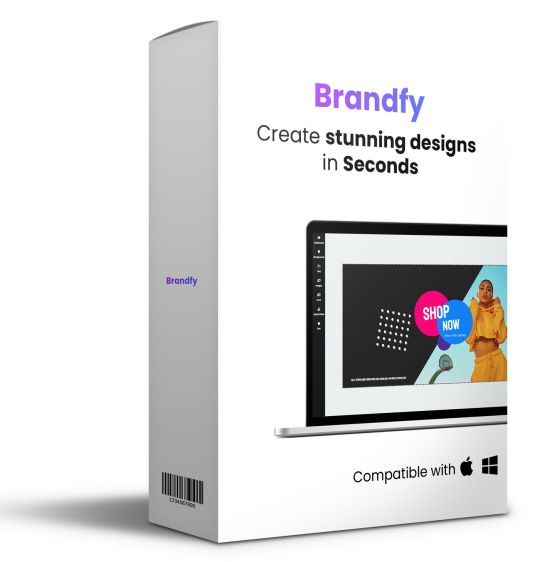
Brandfy Review & Overview
Creator: Rusu Marian
Product: Brandfy
Release Day: 2019-Jul-15
Release Time: 11:00 EDT
Front-End Price: $25
Sales Web Page: https://www.socialleadfreak.com/brandfy-review/
Niche: General
Exactly How Does Brandfy Job?
Action 1: Select Live Builder or Usage Templates (If you select- Usage Templates- there various types of ready-to-use themes as well as you can customise according to your requirements. If you select- Live Building contractor- you can create that visuals that you want from scratch as well as you have all the plan you need, like a specialist graphic developer);.
Step 2: Add text as well as personalize it;.
Action 3: Choose or publish image/choose icon, after that personalize them;.
Tip 4: Download and install the graphic developed, with simply one click.
What i like the most at Brandfy?
You can enjoy this wonderful tool- LIVE HOME BUILDER- that provides the greatest chance to create something brand-new and genuine, to draw in the interest of as lots of consumers as possible.
This choice-- Real-time Contractor- consists of:.
Different professional background that you can personalize with the colour you want.
Text- here you write the text that you require, after that you can choose the font style, design and the colour.
Photos- right here you can publish something that you like or you can make use of the Brandfy pictures which are spectacular. These pictures can be personalized as a result of image filters such as: Grayscale, Invert, RemoveWhite, Sepia, Sepia2, Blur, Emboss.
Icons which are organized right into the adhering to classifications: Arrowheads, Business, Dialogue, Emoticons, Safety, Sports
Export/ Save
With this Live Builder you can produce the coolest graphic as you desire, starting from scratch, however having everything available like the best visuals developer.
What I didn't like at Brandfy?
Brandfy also offers a Pro version with more professional backgrounds and also aspects as well as design templates, each month, so you will have many possibilities to choose from, so you will not recognize what to choose.
Brandfy Rate & Assessment
$ 24,95 - For An Extremely Restricted Time, Once Financial Investment Today-- No Regular Monthly Costs.
Just $27/Month - You can Obtain INSTANTANEOUS Access to Brandfy PRO with Design Templates Club.
All these above await you to make use of at simply $24,95 One Time Settlement very restricted time. Simply click here to see Brandfy and also you'll obtain instant access to whatever.
Costs expose the high quality and also the leading graphics crammed in one awesome product- Brandfy- that you can have it, now. Additionally, there is a Pro variation of Brandfy.
Pro variation comes with brand-new and expertly plan, each month. I recommend it to you, if you need occasionally to develop new and awesome things.
So, if you like to do great graphics and you wish to receive, each month, NEW as well as COOL TOOLS such us: themes, backgrounds as well as components, this indicates PRO BRANDFY is MADE FOR YOU.
Moreover, PRO will certainly thrill you with Picture Cropper, that will certainly reduce your operate in the cropping procedure and also assurances you will not shed money in search of the right individuals to make your excellent graphics for you.
Unlimited accessibility to Cloud Files. Cloud Data Technology enables you to keep all the files you developed total automat.
All this pro functions will conserve your time due to the fact that it provides you the complete bundle every month with every little thing you require. Now, at just $27 On a monthly basis.
Brandfy Verdict
Brandfy is a developing software device that is high-quality as well as easy-to-use.
So, the most effective means to convince on your own that Brandfy is so marvellous, is to simply acquire it now at an Unique Release Cost for just one-time repayment as well as take pleasure in the combination of simplicity and also professionalism and trust incorporated in an authentic method.
0 notes
Text
How to optimize your website images
Given the nature of its services, a moving company needs to provide customers with a proper visual presentation of what they offer. After all, people need to connect with your moving business on a personal basis in order to put their trust in its expertise and hire you. And one of the ways to accomplish such an effect comes through the use of optimized images on your website. Not only does it help you establish a stronger initial bond with site visitors and attract more high-quality to your website, but it also boosts your SEO efforts in the process. In this article, we explore the importance of image optimization and how to optimize your website images.
There are many ways to improve your website performance, and one of them is to optimize your website images
Running a good website can genuinely benefit your business. As a mover, you probably have a lot of images on your website as well as a blog. Perhaps, you’ve noticed that sometimes, you can’t see images or they appear to load too slow. Images are an essential part of website optimization and can significantly improve but also worsen the user’s experience. Therefore, you need to learn how to optimize your website images and make your website an attractive place for your customers.
Why is it important to optimize your website images?
Despite popular belief, images provide more value than merely a decorative element on your website. Instead, they are the visual portrayal of your brand to online users. They are the link between the services your offer and how customers see those services and your entire business in comparison to your competitors. More so than that, your moving company SEO development relies on the quality of your website images as well.
Images that are not blurry and trigger emotional reactions in others can engage them in the same ways in which content can. When you combine the two with the use of captions, readers can connect with the visual appeal of the image much like social media posts. Additionally, including alt tags for each of your images provides positive points in the eyes of search engines, giving a description for each of the images to crawlers and bots. Let’s take a closer look at the top benefits optimizing your moving company website images:
You can reduce page loading speed
Page loading speed is one of the crucial factors for online consumers today. The amount of time someone needs to spend to get the products/services/answers they need will have a significant influence on their next decision. That is why websites need to ensure that their page loading speed is always shorter than 3 seconds, as per Google parameters.
The fact is that the longer it takes your web pages to load and respond to changes, the higher the chances of users leaving your website will be. Now, there are many ways to boost your page loading speed, optimizing your image being among the most efficient ways among them. The size of the images can influence the overall load of the page, making it more difficult for devices to load the page itself. By reducing the size of the image, you can reduce the size of the page – making it easier to load on different devices.
High-quality images are great, but heavy-sized photos can slow down the load speed
Google rewards websites with optimized images
Websites with irrelevant content and poor quality images have less chance of ranking high on search results pages in comparison to optimized ones. That is why it is so important to ensure that your business implements all the tools that digital marketing for moving companies offers. Page loading speed, image optimization, font styles – these are all important elements that search engines use when ranking websites for SEO efforts.
It improves User Experience (UX)
Whether we are talking about inner pages or blog posts, your PPC landing pages, social media posts, or email marketing campaigns – images make a big difference in how your target audience reacts to it all. High-quality images that convey your message can create a lasting impression on users. Therefore, it is all the more important for you to make sure to optimize your website images in the process. So, if movers want to boost user experience for their websites and promotional campaigns, optimizing images plays a key role in this task.
Attract more visitors to your website
People respond positively to visual elements today. Social media platforms portray much of this truth in the likes and shares when it comes to images and videos. When you choose to make the added effort to optimize your website images, you create a strong chance that people will feel inspired to share it with others, earning your potential leads and links in the process. Most of all, this can expand your overall reach, helping your moving company develop as it attracts new audiences and leads in the process.
A simple guide on how to optimize your website images
To optimize your website images means to make their size appropriate, but still, preserve the satisfying quality. Furthermore, it includes optimizing your images’ SEO – improving the page’s ranking on Google search. Before we start on ways how to do it, be sure to do one more thing. You need to determine your website value and see what the problems it may have are. It’s not only about the images – there are maybe some other things you should optimize, too. Then we can proceed to the image optimization. Here’s how to do it.
Check the file format
Images come in different formats, but only some of them are suitable for website pages and faster load. Decide what you want to achieve by posting an image and decide on one of these image formats:
PNG – one of the most common formats across the web. The advantage of using a PNG image is that you can compress its size without losing the quality. However, PNGs are usually ‘heaviest’ in size.
JPG – another standard image format. The great thing about JPG images is that they carry small size and minimal change in quality. However, loss of quality does happen every time you resize them – especially in small details of the image.
GIF – gif format has become very popular in recent years. These are small size images with a limited number of colors. However, they are not used for large, beautiful images, but for animation. You can use them for icons and exciting graphics.
TIF – this format shows the highest quality, but also huge file size. Therefore, it’s not commonly used on the web, but for commercial print works.
Reduce image size …
Large image files are harder to load and therefore, take more time. That’s why when you want to optimize your website images, you need to first think of their size. You should remember that a large pixel size doesn’t always mean the highest quality. If you have a lot of images, you can reduce their size online easily at once, or do it in some other software like Adobe Photoshop.
…while thinking about its quality
Yes, it’s true that images shouldn’t be too large so the website can load faster. However, you shouldn’t overdo it. Reducing a size too much usually means low-quality images. It’s okay to reduce the image quality by 10-20%, because it doesn’t show, but anything more than that can be harmful.
Learn about the compression
Images can be compressed in two ways – lossy or lossless compression. In lossy compression, the images, usually JPEG formats, lose some of its data – which is not a big deal but helps to reduce the file size. When an image is compressed in a lossless way, it doesn’t lose any of the information or the quality.
To benefit your website, be sure to optimize your website images correctly
Use relevant images
Putting pictures on your page shouldn’t just be a random task you do. Dedicate your time to find quality images that are relevant to the content you create. They should describe the text you are writing and complete it the topic. This way, they will leave an impression on your readers and inspire them to read more.
Include captions
Captions should be included in almost all images on your website. That is an interesting way to describe an image but also include it in search results on Google.
Write alt tags to optimize your website images
Alt tags are very often forgotten, even though they are a very important piece of image optimization. To maximize your website images correctly, be sure to include alternative text to raise the relevance of an image and help users who can reach the image and caption to understand what’s on it. Alt tags and captions are easily important when using WordPress, so don’t forget to add them with your images.
Extra tip: If you use WordPress for writing your content, you need to think about its safety. Even though it is the most commonly used CMS, there is a level of risk you should always consider. Therefore, learn about how to secure your WordPress website and don’t think about the possible dangers.
Start boosting your brand through the images you use
Despite how times are changing and how digitalization is sweeping the world, a picture is still worth a thousand words. Today, this old proverb is even more true than before, given how many images there are online, and how fast users go through each of them. That is why you need to make the effort to ensure that each of the images connected to your brand can help it grow. By making the images on your website better, you also develop your brand as a moving company in the process.
For additional assistance on how best to optimize your website images or take your website to the next level, make sure to reach out to our movers’ website design team today!
The post How to optimize your website images appeared first on Movers Development.
from How to optimize your website images
0 notes
Text
Translating Design Wireframes Into Accessible HTML/CSS
About The Author
Harris is a web developer with a strong passion for digital equality. He works at Deque Systems as the Principal UI Engineer building awesome web applications. … More about Harris …
The most efficient way to build accessible websites and apps is to “shift left” by incorporating accessibility testing into the earliest stages of your development and design process. In this article, Harris will walk you through the process of analyzing a wireframe from an accessibility perspective and making coding decisions to optimize for accessibility in both design and development phases.
All too often, accessibility doesn’t cross a designer’s mind when creating user interfaces. Overlooking accessibility considerations in the design phase can trickle down through to your website or application and have a large impact on your users. Whether it is usability testing, creating prototypes, adopting an accessible pattern library, or even just annotating wireframes, designers must incorporate accessibility into their workflow. Instead of overloading QA engineers to find accessibility defects, thinking of accessibility from the start, or “shifting left,” can have a tremendously positive impact on the content you create.
Shifting Left
There are many studies that show the changes in the cost of fixing defects at different stages of the development process. Based on the cost of fixing a defect at the design stage as having a factor of 1x, these studies show cost differences that increase to 6x during implementation, 15x during testing after code commit, and as high as 100x if caught after the defect makes it into production. Research by the NIST estimates the defects fixing costs being as 10x during integration testing and 15x during system testing but only 30x in production.[^2] Regardless of what your organization’s actual costs are, one thing is certain: catching defects in the design and development phase is orders-of-magnitude less expensive than later in the process.
Deque has assembled data from 20 years of accessibility testing. Based on our data, a trend that we have seen over the last five years, as Web applications have increased in complexity, is that the number of defects per page has been increasing steadily to between 30 and 50 defects per page. These defect numbers often dwarf any functional defect rates and amplify the value in shifting accessibility testing and fixing as far left in the process as possible.
Around 70% of accessibility defects can be avoided through the appropriate combination of automated and guided testing during the design and development process.
This article is aimed at giving you an overview of how this can be achieved.
The Design Phase
Annotations
Annotations are textual or graphical explanations added to a design to inform the implementer of intent. Similar to a designer annotating things like color and font-size, accessibility information must also be conveyed in designs. Let’s dive into a simple audio player widget and assess what kinds of annotations we will need.
Our audio player will consist of three controls:
A control to go to the previous track (when applicable)
A control to play and pause the currently playing audio track
A control to go to the next track (when applicable)
(Large preview)
Name, Role And State
The accessible name of a component will dictate what an assistive technology user will be informed of when interacting with it. It is very important to annotate each of our audio player controls because, visually, they are represented with iconography alone and no textual content. This means that we will annotate the 3 controls with accessible names of “Previous track,” “Pause,” and “Next track.”
Next, we want to think about the purpose of each of these 3 controls. Since they are clickable elements that perform audio player actions, the obvious choice of role here is “button”. This is not something that should be assumed through the design but, rather, this is something that designers must annotate to ensure the implementers add this semantic information to the controls. Having the roles mapped out from the start will save you from having to go back and add them to the controls after the implementation has already taken place.
Finally, just as designers map out how a control appears when hovered, they must be thinking about the various states of their widget in terms of accessibility. In the case of our audio player, we actually have quite a few states to annotate for the implementer. Starting with the “Previous track” button, we know that it should be disabled when there is no previous track to play. The play/pause button should toggle the audio player between the playing and paused states. This means we need to annotate that the accessible name needs to match that state. The button’s accessible name should be “Pause” when audio is playing and “Play” when audio is paused. For the “Next track” button, we should annotate the fact that it should be disabled when there is no next track. Lastly, the hover and focus states for each of the buttons should be annotated so keyboard users have some visual indication of the currently focused control in the audio player.
(Large preview)
Interaction for the entire component
When on first track: disable “previous track” button
When on last track: disable “next track” button
When playing, display the “pause” button and hide the “play” button
When not playing: display the “play” button and hide the “pause” button
After clicking “play”, place focus on the “pause” button
After clicking “pause” place focus on the “play” button
Usability Testing
Usability testing, a UX research methodology in which a researcher has a user perform a series of tasks and analyzes their behavior, is a very important stage in the design phase. Information gathered from usability testing is vital in shaping digital user experiences. Performing this testing with users with disabilities is extremely important because it allows your team to get an idea of how easily these users will be able to interact with the content they are creating. If you are doing usability testing on an existing system, you will be able to get a very realistic scenario set up for the participant which is great when it comes to users who rely on various assistive technologies.
If you are doing usability testing on a non-existing system, be prepared to deal with accessibility challenges surrounding the output of design software. The interactive prototypes outputted from these tools are often extremely different from what the end product will be in a browser or on an OS platform. In addition, these “functional prototypes” are usually extremely inaccessible. If possible, find a close alternative out in the wild that you can use in your prototype’s place, which can give you a good idea of how your participants will interact with your system. For example, if you are building a new mobile navigation component, find an existing one on the Internet, and do usability testing with it. Determine what worked in this alternative and learn what needs to be improved. Either way, always be prepared to make accommodations for your usability testing participants based on their disabilities. Ensuring that the tests go smoothly without any roadblocks will not only make your participants happy but will also allow you to get through more testing in less time.
Pattern Libraries
Pattern libraries are collections of user interface components and are extremely beneficial in both the design and the development phases. Having a sufficient set of UI components at your fingertips makes building fully functional applications much easier. For the designer, these components help keep a nice consistency across your application which improves the overall experience for your users. For the developer, having fully-tested, accessible, reusable components help produce high-quality content rapidly. These components should be treated with special care in terms of accessibility because they will presumably be used numerous times through your application(s).
Work With the Developers
Speaking with fellow developers and designers at conferences and meetups, I frequently hear of divided teams in which the designers and developers work in complete isolation from one another. Not only should developers be included in the design phase in things like design review meetings, but designers should also be included in the development phase.
Collaboration is key when it comes to creating awesome accessible content.
Oftentimes, developers are privy to implementation details that can help shape design comps or even pivot an approach to solving a design problem. Likewise, designers can help keep developers in check when it comes to implementing their designs accessibly because detail-oriented aspects such as spacing and specific color usage can have a huge impact on accessibility. While the developers implement a design, designers should pay close attention to things like focus indication, tab order, reading order, fonts, colors, and even accessible names and alt texts of images. Because, after all, what good are all of those amazing accessibility-specific annotations if the developer ignores them?
The Development Phase
Automate Accessibility Testing
Us developers love the idea that certain things in our workflows can be completely automated. Thankfully, there are many amazing accessibility automation libraries available, which your team should leverage to assist in creating sustainable accessible interfaces. Static analysis tools such as eslint-plugin-jsx-a11y can provide immediate feedback to developers warning them of potential accessibility issues while they are coding. Developers can even set their text editor up to display these warnings right as they type code, catching these defects live as they pop up.
Accessibility rules engines, such as axe-core, can be integrated into almost any framework or environment and can help catch many extremely common accessibility issues. A great way to ensure your entire team is creating accessible content is to integrate these types of tools into your CI (continuous integration) and CD (continuous delivery) pipelines. Writing accessibility-specific test cases (unit or end-to-end) is another great form of automation. On my team, we have all of the above configured so no pull requests can even be merged until all of our accessibility automation tests have passed. This means we can guarantee minimal accessibility defects even make it to our dev servers and definitely won’t make it into production.
Manage Accessibility Defects Systematically
Accessibility issues should be treated no differently than security or functionality defects. They should be triaged and prioritized regularly with the rest of the “normal” workload. Measuring progress and gathering metrics specific to accessibility defects can also be useful, especially if your team is just beginning to ramp up on accessibility. This can also help identify your system’s weak points or bottlenecks. If your team participates in sprint retrospectives (or something similar), accessibility should be a talking point. Reflecting on what works and what doesn’t is a healthy exercise and can lead to enhancements in your team’s overall approach towards sustainable accessibility.
This Cool axe Beta tool
We’ve talked about accessibility automation, which is a great starting point for testing. However, inevitably, a human must pick up where the robots leave off to get full accessibility testing coverage. Manual testing requires a deep understanding of accessibility as well as the W3C Web Content Accessibility Guidelines, or “WCAG.” The axe Beta application assists in getting you through this manual testing without having to be an expert in accessibility. It has a large suite of Intelligent Guided Tests, which ask extremely simple questions and does all of the heavy liftings for you!
Given that we always strive to automate everything, one might react skeptically to the assertion that accessibility testing cannot be fully automated and requires a human brain to cover all bases. However, let’s take images as an example and what information, if any, they provide in the context of a webpage. An accessibility automation library cannot derive informational intent by scanning or processing an image. Even if we feed a machine learning algorithm an image and it can spit out a perfect description of what is in that image, it doesn’t know what that image conveys in the context of the page. The information a given image conveys, or whether that image is used solely as decoration, is completely up to the author of the content.
Tying It All Together
Having accessibility in mind from the very beginning of development makes creating accessible content much easier than making these considerations late in the software development lifecycle. Baking accessibility into the ideation, design and implementation of your software creates a more sustainable product.
Set your team up for success by utilizing resources such as WCAG, ARIA, ARIA Authoring Practices, and Stack Overflow. Prevent accessibility defects from finding their way into your software by leveraging accessibility automation libraries and integrating them into your continuous integration servers. Our team has worked hard on filling in the gap between automated and manual testing, we’d love for you to give axe Beta a try! If accessibility defects are handled systematically, not only can you rid your applications of these issues, but you can prevent them from finding their way back in the future.
Do you want to join me in a free workshop on this exact topic? Register for our upcoming Translating Design Wireframes Virtual Workshop which will be split into two 3 hour sessions.
(ra, il)
Website Design & SEO Delray Beach by DBL07.co
Delray Beach SEO
source http://www.scpie.org/translating-design-wireframes-into-accessible-html-css/ source https://scpie.tumblr.com/post/624282958381088768
0 notes
Text
Translating Design Wireframes Into Accessible HTML/CSS
About The Author
Harris is a web developer with a strong passion for digital equality. He works at Deque Systems as the Principal UI Engineer building awesome web applications. … More about Harris …
The most efficient way to build accessible websites and apps is to “shift left” by incorporating accessibility testing into the earliest stages of your development and design process. In this article, Harris will walk you through the process of analyzing a wireframe from an accessibility perspective and making coding decisions to optimize for accessibility in both design and development phases.
All too often, accessibility doesn’t cross a designer’s mind when creating user interfaces. Overlooking accessibility considerations in the design phase can trickle down through to your website or application and have a large impact on your users. Whether it is usability testing, creating prototypes, adopting an accessible pattern library, or even just annotating wireframes, designers must incorporate accessibility into their workflow. Instead of overloading QA engineers to find accessibility defects, thinking of accessibility from the start, or “shifting left,” can have a tremendously positive impact on the content you create.
Shifting Left
There are many studies that show the changes in the cost of fixing defects at different stages of the development process. Based on the cost of fixing a defect at the design stage as having a factor of 1x, these studies show cost differences that increase to 6x during implementation, 15x during testing after code commit, and as high as 100x if caught after the defect makes it into production. Research by the NIST estimates the defects fixing costs being as 10x during integration testing and 15x during system testing but only 30x in production.[^2] Regardless of what your organization’s actual costs are, one thing is certain: catching defects in the design and development phase is orders-of-magnitude less expensive than later in the process.
Deque has assembled data from 20 years of accessibility testing. Based on our data, a trend that we have seen over the last five years, as Web applications have increased in complexity, is that the number of defects per page has been increasing steadily to between 30 and 50 defects per page. These defect numbers often dwarf any functional defect rates and amplify the value in shifting accessibility testing and fixing as far left in the process as possible.
Around 70% of accessibility defects can be avoided through the appropriate combination of automated and guided testing during the design and development process.
This article is aimed at giving you an overview of how this can be achieved.
The Design Phase
Annotations
Annotations are textual or graphical explanations added to a design to inform the implementer of intent. Similar to a designer annotating things like color and font-size, accessibility information must also be conveyed in designs. Let’s dive into a simple audio player widget and assess what kinds of annotations we will need.
Our audio player will consist of three controls:
A control to go to the previous track (when applicable)
A control to play and pause the currently playing audio track
A control to go to the next track (when applicable)
(Large preview)
Name, Role And State
The accessible name of a component will dictate what an assistive technology user will be informed of when interacting with it. It is very important to annotate each of our audio player controls because, visually, they are represented with iconography alone and no textual content. This means that we will annotate the 3 controls with accessible names of “Previous track,” “Pause,” and “Next track.”
Next, we want to think about the purpose of each of these 3 controls. Since they are clickable elements that perform audio player actions, the obvious choice of role here is “button”. This is not something that should be assumed through the design but, rather, this is something that designers must annotate to ensure the implementers add this semantic information to the controls. Having the roles mapped out from the start will save you from having to go back and add them to the controls after the implementation has already taken place.
Finally, just as designers map out how a control appears when hovered, they must be thinking about the various states of their widget in terms of accessibility. In the case of our audio player, we actually have quite a few states to annotate for the implementer. Starting with the “Previous track” button, we know that it should be disabled when there is no previous track to play. The play/pause button should toggle the audio player between the playing and paused states. This means we need to annotate that the accessible name needs to match that state. The button’s accessible name should be “Pause” when audio is playing and “Play” when audio is paused. For the “Next track” button, we should annotate the fact that it should be disabled when there is no next track. Lastly, the hover and focus states for each of the buttons should be annotated so keyboard users have some visual indication of the currently focused control in the audio player.
(Large preview)
Interaction for the entire component
When on first track: disable “previous track” button
When on last track: disable “next track” button
When playing, display the “pause” button and hide the “play” button
When not playing: display the “play” button and hide the “pause” button
After clicking “play”, place focus on the “pause” button
After clicking “pause” place focus on the “play” button
Usability Testing
Usability testing, a UX research methodology in which a researcher has a user perform a series of tasks and analyzes their behavior, is a very important stage in the design phase. Information gathered from usability testing is vital in shaping digital user experiences. Performing this testing with users with disabilities is extremely important because it allows your team to get an idea of how easily these users will be able to interact with the content they are creating. If you are doing usability testing on an existing system, you will be able to get a very realistic scenario set up for the participant which is great when it comes to users who rely on various assistive technologies.
If you are doing usability testing on a non-existing system, be prepared to deal with accessibility challenges surrounding the output of design software. The interactive prototypes outputted from these tools are often extremely different from what the end product will be in a browser or on an OS platform. In addition, these “functional prototypes” are usually extremely inaccessible. If possible, find a close alternative out in the wild that you can use in your prototype’s place, which can give you a good idea of how your participants will interact with your system. For example, if you are building a new mobile navigation component, find an existing one on the Internet, and do usability testing with it. Determine what worked in this alternative and learn what needs to be improved. Either way, always be prepared to make accommodations for your usability testing participants based on their disabilities. Ensuring that the tests go smoothly without any roadblocks will not only make your participants happy but will also allow you to get through more testing in less time.
Pattern Libraries
Pattern libraries are collections of user interface components and are extremely beneficial in both the design and the development phases. Having a sufficient set of UI components at your fingertips makes building fully functional applications much easier. For the designer, these components help keep a nice consistency across your application which improves the overall experience for your users. For the developer, having fully-tested, accessible, reusable components help produce high-quality content rapidly. These components should be treated with special care in terms of accessibility because they will presumably be used numerous times through your application(s).
Work With the Developers
Speaking with fellow developers and designers at conferences and meetups, I frequently hear of divided teams in which the designers and developers work in complete isolation from one another. Not only should developers be included in the design phase in things like design review meetings, but designers should also be included in the development phase.
Collaboration is key when it comes to creating awesome accessible content.
Oftentimes, developers are privy to implementation details that can help shape design comps or even pivot an approach to solving a design problem. Likewise, designers can help keep developers in check when it comes to implementing their designs accessibly because detail-oriented aspects such as spacing and specific color usage can have a huge impact on accessibility. While the developers implement a design, designers should pay close attention to things like focus indication, tab order, reading order, fonts, colors, and even accessible names and alt texts of images. Because, after all, what good are all of those amazing accessibility-specific annotations if the developer ignores them?
The Development Phase
Automate Accessibility Testing
Us developers love the idea that certain things in our workflows can be completely automated. Thankfully, there are many amazing accessibility automation libraries available, which your team should leverage to assist in creating sustainable accessible interfaces. Static analysis tools such as eslint-plugin-jsx-a11y can provide immediate feedback to developers warning them of potential accessibility issues while they are coding. Developers can even set their text editor up to display these warnings right as they type code, catching these defects live as they pop up.
Accessibility rules engines, such as axe-core, can be integrated into almost any framework or environment and can help catch many extremely common accessibility issues. A great way to ensure your entire team is creating accessible content is to integrate these types of tools into your CI (continuous integration) and CD (continuous delivery) pipelines. Writing accessibility-specific test cases (unit or end-to-end) is another great form of automation. On my team, we have all of the above configured so no pull requests can even be merged until all of our accessibility automation tests have passed. This means we can guarantee minimal accessibility defects even make it to our dev servers and definitely won’t make it into production.
Manage Accessibility Defects Systematically
Accessibility issues should be treated no differently than security or functionality defects. They should be triaged and prioritized regularly with the rest of the “normal” workload. Measuring progress and gathering metrics specific to accessibility defects can also be useful, especially if your team is just beginning to ramp up on accessibility. This can also help identify your system’s weak points or bottlenecks. If your team participates in sprint retrospectives (or something similar), accessibility should be a talking point. Reflecting on what works and what doesn’t is a healthy exercise and can lead to enhancements in your team’s overall approach towards sustainable accessibility.
This Cool axe Beta tool
We’ve talked about accessibility automation, which is a great starting point for testing. However, inevitably, a human must pick up where the robots leave off to get full accessibility testing coverage. Manual testing requires a deep understanding of accessibility as well as the W3C Web Content Accessibility Guidelines, or “WCAG.” The axe Beta application assists in getting you through this manual testing without having to be an expert in accessibility. It has a large suite of Intelligent Guided Tests, which ask extremely simple questions and does all of the heavy liftings for you!
Given that we always strive to automate everything, one might react skeptically to the assertion that accessibility testing cannot be fully automated and requires a human brain to cover all bases. However, let’s take images as an example and what information, if any, they provide in the context of a webpage. An accessibility automation library cannot derive informational intent by scanning or processing an image. Even if we feed a machine learning algorithm an image and it can spit out a perfect description of what is in that image, it doesn’t know what that image conveys in the context of the page. The information a given image conveys, or whether that image is used solely as decoration, is completely up to the author of the content.
Tying It All Together
Having accessibility in mind from the very beginning of development makes creating accessible content much easier than making these considerations late in the software development lifecycle. Baking accessibility into the ideation, design and implementation of your software creates a more sustainable product.
Set your team up for success by utilizing resources such as WCAG, ARIA, ARIA Authoring Practices, and Stack Overflow. Prevent accessibility defects from finding their way into your software by leveraging accessibility automation libraries and integrating them into your continuous integration servers. Our team has worked hard on filling in the gap between automated and manual testing, we’d love for you to give axe Beta a try! If accessibility defects are handled systematically, not only can you rid your applications of these issues, but you can prevent them from finding their way back in the future.
Do you want to join me in a free workshop on this exact topic? Register for our upcoming Translating Design Wireframes Virtual Workshop which will be split into two 3 hour sessions.
(ra, il)
Website Design & SEO Delray Beach by DBL07.co
Delray Beach SEO
source http://www.scpie.org/translating-design-wireframes-into-accessible-html-css/
0 notes
Text
Translating Design Wireframes Into Accessible HTML/CSS
About The Author
Harris is a web developer with a strong passion for digital equality. He works at Deque Systems as the Principal UI Engineer building awesome web applications. … More about Harris …
The most efficient way to build accessible websites and apps is to “shift left” by incorporating accessibility testing into the earliest stages of your development and design process. In this article, Harris will walk you through the process of analyzing a wireframe from an accessibility perspective and making coding decisions to optimize for accessibility in both design and development phases.
All too often, accessibility doesn’t cross a designer’s mind when creating user interfaces. Overlooking accessibility considerations in the design phase can trickle down through to your website or application and have a large impact on your users. Whether it is usability testing, creating prototypes, adopting an accessible pattern library, or even just annotating wireframes, designers must incorporate accessibility into their workflow. Instead of overloading QA engineers to find accessibility defects, thinking of accessibility from the start, or “shifting left,” can have a tremendously positive impact on the content you create.
Shifting Left
There are many studies that show the changes in the cost of fixing defects at different stages of the development process. Based on the cost of fixing a defect at the design stage as having a factor of 1x, these studies show cost differences that increase to 6x during implementation, 15x during testing after code commit, and as high as 100x if caught after the defect makes it into production. Research by the NIST estimates the defects fixing costs being as 10x during integration testing and 15x during system testing but only 30x in production.[^2] Regardless of what your organization’s actual costs are, one thing is certain: catching defects in the design and development phase is orders-of-magnitude less expensive than later in the process.
Deque has assembled data from 20 years of accessibility testing. Based on our data, a trend that we have seen over the last five years, as Web applications have increased in complexity, is that the number of defects per page has been increasing steadily to between 30 and 50 defects per page. These defect numbers often dwarf any functional defect rates and amplify the value in shifting accessibility testing and fixing as far left in the process as possible.
Around 70% of accessibility defects can be avoided through the appropriate combination of automated and guided testing during the design and development process.
This article is aimed at giving you an overview of how this can be achieved.
The Design Phase
Annotations
Annotations are textual or graphical explanations added to a design to inform the implementer of intent. Similar to a designer annotating things like color and font-size, accessibility information must also be conveyed in designs. Let’s dive into a simple audio player widget and assess what kinds of annotations we will need.
Our audio player will consist of three controls:
A control to go to the previous track (when applicable)
A control to play and pause the currently playing audio track
A control to go to the next track (when applicable)
(Large preview)
Name, Role And State
The accessible name of a component will dictate what an assistive technology user will be informed of when interacting with it. It is very important to annotate each of our audio player controls because, visually, they are represented with iconography alone and no textual content. This means that we will annotate the 3 controls with accessible names of “Previous track,” “Pause,” and “Next track.”
Next, we want to think about the purpose of each of these 3 controls. Since they are clickable elements that perform audio player actions, the obvious choice of role here is “button”. This is not something that should be assumed through the design but, rather, this is something that designers must annotate to ensure the implementers add this semantic information to the controls. Having the roles mapped out from the start will save you from having to go back and add them to the controls after the implementation has already taken place.
Finally, just as designers map out how a control appears when hovered, they must be thinking about the various states of their widget in terms of accessibility. In the case of our audio player, we actually have quite a few states to annotate for the implementer. Starting with the “Previous track” button, we know that it should be disabled when there is no previous track to play. The play/pause button should toggle the audio player between the playing and paused states. This means we need to annotate that the accessible name needs to match that state. The button’s accessible name should be “Pause” when audio is playing and “Play” when audio is paused. For the “Next track” button, we should annotate the fact that it should be disabled when there is no next track. Lastly, the hover and focus states for each of the buttons should be annotated so keyboard users have some visual indication of the currently focused control in the audio player.
(Large preview)
Interaction for the entire component
When on first track: disable “previous track” button
When on last track: disable “next track” button
When playing, display the “pause” button and hide the “play” button
When not playing: display the “play” button and hide the “pause” button
After clicking “play”, place focus on the “pause” button
After clicking “pause” place focus on the “play” button
Usability Testing
Usability testing, a UX research methodology in which a researcher has a user perform a series of tasks and analyzes their behavior, is a very important stage in the design phase. Information gathered from usability testing is vital in shaping digital user experiences. Performing this testing with users with disabilities is extremely important because it allows your team to get an idea of how easily these users will be able to interact with the content they are creating. If you are doing usability testing on an existing system, you will be able to get a very realistic scenario set up for the participant which is great when it comes to users who rely on various assistive technologies.
If you are doing usability testing on a non-existing system, be prepared to deal with accessibility challenges surrounding the output of design software. The interactive prototypes outputted from these tools are often extremely different from what the end product will be in a browser or on an OS platform. In addition, these “functional prototypes” are usually extremely inaccessible. If possible, find a close alternative out in the wild that you can use in your prototype’s place, which can give you a good idea of how your participants will interact with your system. For example, if you are building a new mobile navigation component, find an existing one on the Internet, and do usability testing with it. Determine what worked in this alternative and learn what needs to be improved. Either way, always be prepared to make accommodations for your usability testing participants based on their disabilities. Ensuring that the tests go smoothly without any roadblocks will not only make your participants happy but will also allow you to get through more testing in less time.
Pattern Libraries
Pattern libraries are collections of user interface components and are extremely beneficial in both the design and the development phases. Having a sufficient set of UI components at your fingertips makes building fully functional applications much easier. For the designer, these components help keep a nice consistency across your application which improves the overall experience for your users. For the developer, having fully-tested, accessible, reusable components help produce high-quality content rapidly. These components should be treated with special care in terms of accessibility because they will presumably be used numerous times through your application(s).
Work With the Developers
Speaking with fellow developers and designers at conferences and meetups, I frequently hear of divided teams in which the designers and developers work in complete isolation from one another. Not only should developers be included in the design phase in things like design review meetings, but designers should also be included in the development phase.
Collaboration is key when it comes to creating awesome accessible content.
Oftentimes, developers are privy to implementation details that can help shape design comps or even pivot an approach to solving a design problem. Likewise, designers can help keep developers in check when it comes to implementing their designs accessibly because detail-oriented aspects such as spacing and specific color usage can have a huge impact on accessibility. While the developers implement a design, designers should pay close attention to things like focus indication, tab order, reading order, fonts, colors, and even accessible names and alt texts of images. Because, after all, what good are all of those amazing accessibility-specific annotations if the developer ignores them?
The Development Phase
Automate Accessibility Testing
Us developers love the idea that certain things in our workflows can be completely automated. Thankfully, there are many amazing accessibility automation libraries available, which your team should leverage to assist in creating sustainable accessible interfaces. Static analysis tools such as eslint-plugin-jsx-a11y can provide immediate feedback to developers warning them of potential accessibility issues while they are coding. Developers can even set their text editor up to display these warnings right as they type code, catching these defects live as they pop up.
Accessibility rules engines, such as axe-core, can be integrated into almost any framework or environment and can help catch many extremely common accessibility issues. A great way to ensure your entire team is creating accessible content is to integrate these types of tools into your CI (continuous integration) and CD (continuous delivery) pipelines. Writing accessibility-specific test cases (unit or end-to-end) is another great form of automation. On my team, we have all of the above configured so no pull requests can even be merged until all of our accessibility automation tests have passed. This means we can guarantee minimal accessibility defects even make it to our dev servers and definitely won’t make it into production.
Manage Accessibility Defects Systematically
Accessibility issues should be treated no differently than security or functionality defects. They should be triaged and prioritized regularly with the rest of the “normal” workload. Measuring progress and gathering metrics specific to accessibility defects can also be useful, especially if your team is just beginning to ramp up on accessibility. This can also help identify your system’s weak points or bottlenecks. If your team participates in sprint retrospectives (or something similar), accessibility should be a talking point. Reflecting on what works and what doesn’t is a healthy exercise and can lead to enhancements in your team’s overall approach towards sustainable accessibility.
This Cool axe Beta tool
We’ve talked about accessibility automation, which is a great starting point for testing. However, inevitably, a human must pick up where the robots leave off to get full accessibility testing coverage. Manual testing requires a deep understanding of accessibility as well as the W3C Web Content Accessibility Guidelines, or “WCAG.” The axe Beta application assists in getting you through this manual testing without having to be an expert in accessibility. It has a large suite of Intelligent Guided Tests, which ask extremely simple questions and does all of the heavy liftings for you!
Given that we always strive to automate everything, one might react skeptically to the assertion that accessibility testing cannot be fully automated and requires a human brain to cover all bases. However, let’s take images as an example and what information, if any, they provide in the context of a webpage. An accessibility automation library cannot derive informational intent by scanning or processing an image. Even if we feed a machine learning algorithm an image and it can spit out a perfect description of what is in that image, it doesn’t know what that image conveys in the context of the page. The information a given image conveys, or whether that image is used solely as decoration, is completely up to the author of the content.
Tying It All Together
Having accessibility in mind from the very beginning of development makes creating accessible content much easier than making these considerations late in the software development lifecycle. Baking accessibility into the ideation, design and implementation of your software creates a more sustainable product.
Set your team up for success by utilizing resources such as WCAG, ARIA, ARIA Authoring Practices, and Stack Overflow. Prevent accessibility defects from finding their way into your software by leveraging accessibility automation libraries and integrating them into your continuous integration servers. Our team has worked hard on filling in the gap between automated and manual testing, we’d love for you to give axe Beta a try! If accessibility defects are handled systematically, not only can you rid your applications of these issues, but you can prevent them from finding their way back in the future.
Do you want to join me in a free workshop on this exact topic? Register for our upcoming Translating Design Wireframes Virtual Workshop which will be split into two 3 hour sessions.
(ra, il)
Website Design & SEO Delray Beach by DBL07.co
Delray Beach SEO
source http://www.scpie.org/translating-design-wireframes-into-accessible-html-css/ source https://scpie1.blogspot.com/2020/07/translating-design-wireframes-into.html
0 notes
Text
So You Think You Can Be an Anime Brand Manager
Before I joined Crunchyroll as part of our events team I spent over a decade at FUNimation (I still have to remember to not use all caps when writing the word ‘FUN’ anymore). During my time there I had a variety of different jobs. One of those jobs early on in my time there was as a Brand Manager. A Brand Manager’s main job (during my time there) was to oversee launches and promotions for DVD releases. This was around the mid to late 2000s, so before streaming became the main way to watch anime and DVD multi-part box sets ruled the land.
Over the years I worked as a Brand Manager, I and other Brand Managers came across a lot of different experiences with the brands we worked on. Some of these were challenging or at the very least entertaining. The idea came to me that if I find these things entertaining some anime fans might, as well. So I decided to make a workshop to host at conventions about what it was like being a Brand Manager in anime and throw people into some of the more interesting situations that some of us had come across. Of course, I could not share the exact details of these events or any names. Partners stop being your friend-DA when you break your NDA. We had to make a fake anime series, so Ninja Blood War Host Club in Space was born!
Adam in the Brand Manager workshop days!
Working with some other people in the company we came up with a summary, taglines, general information, and even some art. Now having all these assets I wrote up six different parts of launching a brand and gave each scenario a selection of possible outcomes for people to choose from as how to deal with each situation. I gave the workshop the name, “Shoot The Hostage - An Adventure in Brand Management” to help get people to attend. The term “shoot the hostage” referred to the famous moment from the Keanu Reeves '90s action movie classic Speed, which had the idea of stopping a gunman from taking a hostage by shooting the hostage in the leg so the gunman had to let them go to get away. Basically trying to make the best, but difficult, decision possible in a bad situation. I don’t remember how many conventions I took this to but it was fun to watch people try and tackle a multitude of surprises at each one.
I have not hosted this workshop in a long time, but found myself thinking about it again recently. I thought it would be fun to share it online now since the anime world has grown so much with streaming, Crunchyroll, and more, making this more of a snapshot of anime brand management from over a decade ago... but I couldn’t find the original file! Pretty sure I lost it on some old hard drive. Then Lauren on our events team reminded me she went to one of these workshops before she worked at Crunchyroll. She still had the original paper copy I handed out to everyone in attendance, and now you have it as well!
I hope you enjoy reading this as much as we enjoyed putting it together. Excited to see what answers you decide to go with for each of the scenarios thrown at you. Now you are the Brand Manager - good luck!
Ninja Blood War Host Club in Space
Fact Sheet
Number of episodes: 26
Release packaging strategy: Two 13-episode box sets, 3 months apart
Episode running time: 22 minutes
Licensor: Super-Lucky-Fun-Time! Consortium Project
Original Production Studio: Kermit
Rights: DVD, Merchandise, Broadcast, download to own, streaming (5-7 minute clips)
Possible US retailers:
Online - Congo.com, Correcthings.com
Brick & Mortar - Great Purchase, MoonCoast, Ceiling*Mart, and misc. local anime shops
Available high-res art:
Character art, 8 images (one of each of the main characters)
Promo art, 4 images
Japanese DVD art, 6 images
Misc. images, 15 images
Summary:
Koyuki witnesses his ninja clan fall to the forces of DREAM, a rogue host club bent on conquering the universe one teenage heart at a time. Led by the impossibly charming Shinji Blue, DREAM waltzes toward galactic domination - until Koyuki infiltrates their ranks, disguised as a transfer student from Gamma Prime.
Koyuki abducts Shinji and escapes DREAM's orbital stronghold, but a freak cosmic storm forces a crash landing on Silk-X, an uncharted hot springs world. To get off the planet, the brooding ninja and handsome host must work together to find the ancient Blood Rose. It's definitely not going to be easy. Silk-X's only inhabitants are women -- and the natives are restless!
Taglines:
In space, no one can hear you scream with delight!
Their Lethal Charm won't be enough.
Step #1: Initial Branding - (12 months before street date)
All right, you've studied your brand, watched all the episodes, and are familiar with your resources. You're about to sit down with the all the key department heads for the creative kick-off meeting (this is the meeting where the core ideas and plans are first created) and you need to decide who is the demographic (target age range, gender ratio, and general psychograph) as well as start to create an initial brand look.
Issues: The brand has an underlying 'cute' storyline and a decent amount of comical moments, but what will reach the largest audience as well as being truest to the brand is focusing on the characters and the action. Everyone does not agree on what would be best to focus on internally.
Do you...
a) Not care about what they think and move forward with what you want. You are the Brand Manager. Remember, it's your ass on the line.
b) Go with the opinion of others in spite of your own since you will have to work with them on this project and you don't need it to be any more difficult than it already is.
c) Keep everyone's opinion in mind and not make a final decision on what you want to do until after the meeting.
d) Go with what you believe in but be willing to compromise.
e) Go with what you believe in and be willing to debate your decision until most everyone agrees.
Step #2: DVD Packaging - (10 months before street date)
You and the Graphic Artist for the brand are going through the 35 pieces of art that Japan sent over to decide what to use for the two 13-episode box set releases for the show. The original DVD images mostly appeal to people who have already seen the show (It was a big hit on Japanese TV) and you would rather not use them for the covers. Luckily you have explained this to the Licensor and they understand.
Issues: Unfortunately, most of these images come with rules on how they are to be used set by the Licensor. Here are the rules - which you got months after licensing the brand:
All promo art is only to be used for promotional materials.
5 specific images from the Misc. images group were exclusive to Japanese cell-phone game images and can only be used for cell phone games.
5 other specific images from the Misc. images group can only be used for calendars.
2 more specific images from the Misc. images group are not to be used at all since the artist who drew them and the director of the series had a 'disagreement.'
Do not crop or vector any character images.
This leaves you the 8 pieces of character art for limited use, the 6 original DVD covers you don't think work best for the brand, and 3 Misc. images. These last three images have issues as well since one is from their Christmas special, another is a group shot at the beach, and the last one is a great image but it's horizontal, which US retailers don't like.
Do you...
a) Pick the two best original Japanese cover images and call it a day.
b) Ask for forgiveness, not approval and crop the character images together to create the best DVD covers.
c) Work with your Graphic Artist to make the packaging design super amazing and put some of the unchanged character art on the cover.
d) Explain to Japan that that they need to provide more artwork, but this will force the street date to move.
e) Go with the horizontal image and let your Sales department push it through to the US retailers.
Step #3: Media Plan - (6 months before street date)
You have finished your media plan for the brand and the print ads are about to start being sent out to publications. The back of the box is still in for approval but you have a picture of the front and spine of the first box set at the bottom of the ad. This is important so that people will know what the box looks like when they go pick it up at their local retailer.
Issues: You receive an e-mail from the licensor concerning your ad that reads as follows:
"you can not show the font and spine of the box because that would imply that there is a back of the box, and the back of the box is not yet approved.”
The print ads have to be at the first four publications within 48 hours. You would call them about this issue but it is Bronze Week, a national holiday, in Japan and your contact won't be back in the office till 5 days from now.
Do you...
a) Pretend you didn't see this e-mail till after you sent out these ads and hope the licensors don't see them.
b) Remove the box from the print ad.
c) Use just the front of the box, making it more 2-D, to try and get around the issue.
d) Give the ad space to another Brand Manager to use for another brand and rework your media plan.
e) Send out the print ad and explain to the licensor why you decided to ignore their request when they get back.
Step #4: Fan Feedback - (4 months before street date)
You have distributed your 60-second brand trailer all over the internet for people to get excited about. The trailer was designed to reach your target demographic in both the anime fan and mass-market areas. It is an intro to the series for both those familiar with it or not.
Issues: Some of the more hardcore fans do not like that the trailer doesn't show off each and every subplot and underlying storyline throughout the series in those 60 seconds. Adding to the railing of hate that is being posted online about the trailer, most of the fans that don't like the trailer are arguing what the focus of it should be. There seems to be at least six different schools of thought on this issue.
Do you...
a) Spend the next few days online explaining to the fans why the trailer is the way it is.
b) Contact one of the larger anime press websites about sending out your message to the fans that can be summed up as, “screw the little bastards.”
c) Re-cut a new trailer taking in account what you think could make it more fan friendly. You will need to cut back on the number of brand trailers you plan to make for the series overall to give the Trailer department time to do this.
d) Remove the trailer and post clips from the show earlier than you had planned.
e) Do nothing, move forward.
Step #5: Convention Events - (3 months before street date)
You have been working on a cosplay event for the largest anime/comic/movies convention in the US. You have put together cosplay events in the past and followed the same event creation format for this one. The event is less than 30 days out and almost everything is done and on schedule.
Issues: The original creators were not kept in the loop on the event and are now asking for the cosplayers to only use the official Japanese costumes so that only official goods are being used to promote the brand. The biggest problems with this are that there are only 3 official costumes of the 10 characters you need and all the pants have 18" waist measurements.
Do you...
a) Scrap the event and tell all the cosplayers just to wear official brand t-shirts and pass out flyers instead.
b) Let the Events Manager know he can only use the cosplayers in non-official ways and ask for them to come up with an alternative way of making the event work.
c) Inform the original creators that its too late to change the event even though this could greatly hurt your relationship with them and the licensor down the road.
d) Save the event for a later, but smaller, convention to give you more time to rebuild and redesign to meet the original creator's requests.
e) Offer the event to another Brand Manager who could use cosplayers at the convention without any approval issues.
Step #6: Product Sample - (2 months before street date)
The Inventory department has been working with the manufacturers of the first box set to ensure that all the specification requested are being met. They have just sent over a final product sample for you to take a look at. Please keep in mind that this sample is from the box sets that are, as of 7 days ago, already printing.
Issues: The box looks great in almost every way except that the color of one of the show's main characters on the front of the box wrong. His clothing should be white, not tan. You are very aware that pretty much everyone who worked on the show in Japan as well as most of the fans will notice this.
Do you...
a) Destroy all the boxes printed so far, eat the cost for this, and change the street date to give the manufacturer time to print more.
b) Make a running change on all the boxes not printed yet - about 40% of the initial printing.
c) Tell the manufacturer they need to fix this, cover the costs, and still make the same date. The downside to this would be if the manufacturer will not agree to do this you would be stuck with a full order of misprinted box sets.
d) Make a running change on all the boxes not printed yet and let both the licensor and the fans know of the error and what you are doing to fix it before street date.
e) Do not correct the art on the first box since it could stop people from purchasing the DVDs until they find the corrected one.
What answers did you choose for each scenario? Let us know how your brand manager experiment went in the comments!
0 notes
Text
17 Ways to Get More YouTube Subscribers (2018)
In this post you’re going to learn how to get more YouTube subscribers in 2018.
In fact:
These are the exact strategies I used to grow my channel from zero to 165,900 subscribers.
And today I’m going to show you how I did it…
…and how you can do the same thing.
1. Use “Power Playlists”
“Power Playlists” are like regular playlists… but better.
Here’s exactly how they work:
You see, most playlists are organized by topic.
But Power Playlists are different.
Instead of topics, Power Playlists are organized by outcomes.
Here’s an example from my channel:
As you can see, the title of that playlist is an outcome:
Which makes people MUCH more likely to watch my playlist… and subscribe.
And that leads us to…
2. Publish LONG Videos (10+ Minutes)
Yup, this goes against conventional wisdom.
But stay with me.
I recently did the largest YouTube ranking factors study ever.
And we found something surprising:
Longer videos rank better in YouTube.
For example:
A few months ago I published this video.
As you can see, my video is almost 14 minutes long:
And that’s one of the main reasons that it ranks #1 in YouTube for the keyword: “backlinks”:
3. Promote Videos In Your End Screen
Here’s the deal:
The more of your videos someone watches, the more likely they are to subscribe.
The question is:
How do you get people to watch 2, 5 or even 10 of your videos?
Promote another video in your End Screen.
Here’s an example from my channel:
This simple “Next Video” has led to TONS of bonus views and subscribers:
Here’s how you can do the same thing:
First, include 10 seconds of time at the end of your videos specifically for your End Screen.
Here’s what mine looks like:
Then, use YouTube’s End Screen editor to add a link to a related video:
That’s all there is to it 🙂
4. Branding Watermark = Subscribe Button
This is the ultimate YouTube subscriber hack.
You probably know that you can add a Branding Watermark to your videos.
This watermark lets viewers subscribe to your channel inside of your video.
Unfortunately, most Branding Watermarks are completely ignored.
For example…
Last year I added this watermark to all of my videos:
And it did absolutely nothing.
So I decided to try something new.
Instead of a watermark that looked cool…
…I used one that looked like a normal YouTube subscribe button.
And it worked!
My new watermark generated 70% more subscribers than my old one.
Pretty cool.
5. Focus On Quality… Not Quantity
When I first started my YouTube channel, I read the same advice over and over again:
“If you want to grow your channel, you need to upload videos on a regular basis”
As it turns out, this is HORRIBLE advice.
I’ll explain.
When I first started my channel I published videos on a consistent schedule…
…but no one watched them.
And the few people that watched my videos didn’t even bother to subscribe.
It was REALLY frustrating.
So I decided to change things up.
Instead of quantity, I decided to focus 100% on quality.
And this “quality over quantity” approach worked like magic.
Flash forward to today and my channel generates over 200k views per month from only 24 total videos:
And because I pour my heart and soul into every video, 7k people subscribe to my channel every month:
6. Reply To EVERY Comment
This is one of the EASIEST ways to get more subscribers.
In fact, YouTube’s internal data has found a clear correlation between replying to comments and subscribers:
Why does this help?
Well, most YouTubers never reply to comments.
Which means you instantly stand out when you do.
That’s why I do my best to reply to as many comments as I can.
(Especially right after a new video comes out)
7. Write a Compelling Channel Description
Your YouTube Channel Description is HUGE.
Sadly, most Channel Descriptions look like this:
Imagine that you’re considering subscribing to that channel.
Is that description going to make someone lunge for the subscribe button?
Probably not.
Contrast that weak description with this one:
This about page works because it:
Tells you what the channel is all about
Gives you important information on the channel (like the upload schedule)
Includes a strong call to action to subscribe
Here’s a template to help you write your own Channel Description:
Pro Tip: Sprinkle in a handful of keywords in your description. This can help your channel rank better in YouTube search.
For example, I sprinkled in a few different keywords that people searching for my content would use…
…like “SEO”, “link building” and “content marketing”.
8. Funnel People to “Subscriber Magnets”
This is working GREAT for me right now.
Here’s the step-by-step process:
First, head over to your YouTube Analytics.
And click “Subscribers” → “YouTube Watch Page”.
Next, identify the video that brought you the most subs last month:
(This video is your “Subscriber Magnet”)
In my case, this ONE Subscriber Magnet from my channel brings in as many subscribers as 13 other videos from my channel… combined.
Why is this important?
Your Subscriber Magnet video is PROVEN to generate subscribers.
And if you can get these video in front of more people, you’ll get more subscribers
Here are 3 ways to get more eyeballs on your Subscriber Magnet.
First, feature that video in your End Screen.
Second, make a playlist that starts off with that video:
Finally, promote that video in a card:
You can even make your Subscriber Magnet your channel trailer.
For example, Evan Carmichael uses his high-converting Steve Jobs video as his trailer:
That way, Evan’s high-converting video gets in front of everyone that visits his channel page
9. Use an Awesome Channel Icon
Your Channel Icon shows up EVERYWHERE on YouTube.
That’s why it’s really important to use the right one.
So if you’re a personal brand, use a high-res headshot:
If you’re a company channel, use a version of your logo designed for YouTube.
For example, ESPN rounded their logo so it works perfectly as a Channel Icon:
10. Create a Channel Tagline
Let’s face it:
Most YouTube channels do NOTHING to stand out.
And hey, I’m not judging.
In the early days of my channel I completely ignored my channel’s positioning.
And it was one of the main reasons that I struggled.
Once I started to strategically position my channel, my views and subscribers shot up like a rocketship.
Fortunately, you don’t need an MBA to position and brand your channel.
In fact, all you need to do is create a simple tagline.
Here’s the 3-step process:
First, identify ONE thing that makes your channel unique or different.
Maybe you’re a busy mom that can deadlift 500 pounds.
Maybe your channel teaches software companies how to grow their blog.
The exact “thing” doesn’t matter.
As long as it’s different than the other channels in your niche, you’re set.
For example:
My videos teach people marketing strategies they can use to grow their business.
But if I made my tagline “I teach marketing strategies” or “I help you grow your business”, I’d blend in with thousands of other channels on YouTube.
So I decided to focus on the ONE thing that my channel focuses on:
Higher rankings and more traffic.
Second, put that tagline in big font on your Channel Art.
Here’s mine:
Finally, say your tagline in your Channel Trailer.
11. Heart Awesome Comments
A while back YouTube launched “Creator Hearts”.
Creator Hearts make it easy to highlight awesome comments from your community:
Now for the interesting part…
When you heart a comment, that person gets a notification:
And according to YouTube’s own data:
That’s right:
Heart notifications get 300% more clicks than average.
So whenever someone leaves a solid comment, hook them up with a heart:
As you just saw, this will bring them back to your video… and make them VERY likely to subscribe.
12. Make a Killer Channel Trailer
Here are 3 tactics for making a channel trailer that converts:
Kick things off with your tagline
Start your trailer off with your channel’s tagline.
(Don’t have a tagline. Check out technique #10 from this post)
For example, I say my tagline (“Higher Rankings and More Traffic”) within the first 5 seconds of my trailer:
Stick to 60 seconds (or less)
YouTube themselves say that shorter trailers convert best:
That’s why I made my trailer about a minute long:
Show off your best stuff
Your trailer is a GREAT opportunity to promote your best content.
That’s why the middle of your trailer should be a 20-30 second highlight reel.
For example, my trailer includes LOTS of clips from my other videos:
That way, viewers can quickly get a feel for the type of content that I publish.
13. Create Videos That CRUSH Watch Time
Yup, Watch Time is a massively important YouTube ranking factor.
And not just for YouTube SEO.
Videos with high Watch Time numbers get promoted more often on the YouTube homepage:
And in the Suggested Video sidebar:
That’s why YouTube states that:
Question is:
How do you maximize Watch Time?
Use lots of Pattern Interrupts.
Definition
An event that changes a person’s thought patterns.
Pattern Interrupts make your videos more dynamic…
…which keeps people watching.
That’s why I use TONS of Pattern Interrupts in every video.
Including graphics:
Jump cuts:
And corny jokes:
Remember:
Pattern Interrupts don’t need to be anything fancy.
For example, check out this video from Safiya Nygaard:
Safiya uses lots of super simple Pattern Interrupts (like camera angle changes and simple graphics) to keep things fresh.
14. Embed YouTube Videos In Blog Posts
Your blog is a HUGE untapped source of views and subscribers.
Why?
Well, if someone’s reading your text content, they clearly like your stuff.
Which means they’re primed to subscribe.
That’s why I embed lots of videos in my blog posts.
Sometimes the video makes up an entire step or tip:
But I also embed videos as a way for people to learn more about something from the post:
Either way, these embeds get my videos in front of more people.
And not just random people.
I’m showing my videos to people that are SUPER likely to subscribe to my channel.
15. End Videos With a Strong CTA
When someone get to the end of your video, they think:
“What’s next?”
And unless you give them something to do, they’re going to click over to another video from another channel.
So tell them to subscribe to your channel.
And don’t be afraid to tell people exactly what to do.
For example, here’s how I end all of my videos:
I literally tell people to click on the subscribe button below the video.
That way, there’s no guesswork or thinking involved.
And that’s one of the main reasons that so many people subscribe right after watching one of my videos:
16. Promote Your Channel In Ebooks, Webinars, Presentations and Lead Magnets
The next time you create ANY piece of content, ask yourself:
“How can I funnel people from this content to my channel?”
For example, I include a link to my channel in every lead magnet:
I even promote my channel in podcast interviews:
17. Optimize Your Channel Page
When someone lands on your channel page, two things can happen:
They leave right away
They watch more of your videos and subscribe
And I can tell you from experience that an optimized channel page can increase your subscribers by 2-5x.
For example, my channel used to look super unprofessional:
Needless to say, VERY few people that landed on my page decided to subscribe.
That’s when I decided to put more time and effort into my channel page.
Specifically, I hired a pro designer to make my Channel Art:
And I organized my videos so that my best stuff appeared at the top:
That said:
There’s no “perfect” way to organize your Channel Page.
But here’s a template that I notice a lot of top YouTubers use:
Bonus #1: The “Social Media Preview”
I used to share my videos on social media like this:
And my posts got BURIED.
Why?
Because Facebook, LinkedIn and other social media sites want to keep people on their platform.
Which means they don’t like posts that send people to YouTube.
Well, I recently discovered a way around this problem:
The “Social Media Preview”.
And this simple strategy has helped me get INSANE views on social media:
In fact, one of my recent Social Media Previews got over 30k views on LinkedIn:
Here’s how to do it:
First, grab a 30-90 second clip from your YouTube video.
This clip should be a single technique, idea or point.
Next, upload that clip as native content.
This is key.
Like I mentioned earlier, social media sites want to promote native content on their platform.
And there’s data to back this up.
Native video Facebook posts get 10x more views than posts that linked to YouTube.
Finally, include a link to your video as the first comment on the post.
That way, if someone wants to see more, they can easily head over to the full video on YouTube.
And you’re set.
Bonus #2: Include a Subscribe Link in Your Channel Art
You probably know that you can link to external sites in your Channel Art:
But what you may not know is that you can sneak in an extra subscribe button there.
Here’s an example:
All you need to do is create a YouTube subscribe link:
Then, add that link as one of your Channel Art links:
Make sure to give your link a compelling title:
And when someone clicks on that link, they’ll see this high-converting prompt:
Nice.
Now It’s Your Turn
And now I’d like to hear from you:
Which strategy from today’s post are you excited to try first?
Or maybe you have a question about something you read.
Either way, let me know by leaving a comment below right now.
Source link
0 notes
Photo

New Post has been published on http://twoarticles.com/17-ways-to-get-more-youtube-subscribers-2018/
17 Ways to Get More YouTube Subscribers (2018)
In this post you’re going to learn how to get more YouTube subscribers in 2018.
In fact:
These are the exact strategies I used to grow my channel from zero to 165,900 subscribers.
And today I’m going to show you how I did it…
…and how you can do the same thing.
1. Use “Power Playlists”
“Power Playlists” are like regular playlists… but better.
Here’s exactly how they work:
You see, most playlists are organized by topic.
But Power Playlists are different.
Instead of topics, Power Playlists are organized by outcomes.
Here’s an example from my channel:
As you can see, the title of that playlist is an outcome:
Which makes people MUCH more likely to watch my playlist… and subscribe.
And that leads us to…
2. Publish LONG Videos (10+ Minutes)
Yup, this goes against conventional wisdom.
But stay with me.
I recently did the largest YouTube ranking factors study ever.
And we found something surprising:
Longer videos rank better in YouTube.
For example:
A few months ago I published this video.
As you can see, my video is almost 14 minutes long:
And that’s one of the main reasons that it ranks #1 in YouTube for the keyword: “backlinks”:
3. Promote Videos In Your End Screen
Here’s the deal:
The more of your videos someone watches, the more likely they are to subscribe.
The question is:
How do you get people to watch 2, 5 or even 10 of your videos?
Promote another video in your End Screen.
Here’s an example from my channel:
This simple “Next Video” has led to TONS of bonus views and subscribers:
Here’s how you can do the same thing:
First, include 10 seconds of time at the end of your videos specifically for your End Screen.
Here’s what mine looks like:
Then, use YouTube’s End Screen editor to add a link to a related video:
That’s all there is to it 🙂
4. Branding Watermark = Subscribe Button
This is the ultimate YouTube subscriber hack.
You probably know that you can add a Branding Watermark to your videos.
This watermark lets viewers subscribe to your channel inside of your video.
Unfortunately, most Branding Watermarks are completely ignored.
For example…
Last year I added this watermark to all of my videos:
And it did absolutely nothing.
So I decided to try something new.
Instead of a watermark that looked cool…
…I used one that looked like a normal YouTube subscribe button.
And it worked!
My new watermark generated 70% more subscribers than my old one.
Pretty cool.
5. Focus On Quality… Not Quantity
When I first started my YouTube channel, I read the same advice over and over again:
“If you want to grow your channel, you need to upload videos on a regular basis”
As it turns out, this is HORRIBLE advice.
I’ll explain.
When I first started my channel I published videos on a consistent schedule…
…but no one watched them.
And the few people that watched my videos didn’t even bother to subscribe.
It was REALLY frustrating.
So I decided to change things up.
Instead of quantity, I decided to focus 100% on quality.
And this “quality over quantity” approach worked like magic.
Flash forward to today and my channel generates over 200k views per month from only 24 total videos:
And because I pour my heart and soul into every video, 7k people subscribe to my channel every month:
6. Reply To EVERY Comment
This is one of the EASIEST ways to get more subscribers.
In fact, YouTube’s internal data has found a clear correlation between replying to comments and subscribers:
Why does this help?
Well, most YouTubers never reply to comments.
Which means you instantly stand out when you do.
That’s why I do my best to reply to as many comments as I can.
(Especially right after a new video comes out)
7. Write a Compelling Channel Description
Your YouTube Channel Description is HUGE.
Sadly, most Channel Descriptions look like this:
Imagine that you’re considering subscribing to that channel.
Is that description going to make someone lunge for the subscribe button?
Probably not.
Contrast that weak description with this one:
This about page works because it:
Tells you what the channel is all about
Gives you important information on the channel (like the upload schedule)
Includes a strong call to action to subscribe
Here’s a template to help you write your own Channel Description:
Pro Tip: Sprinkle in a handful of keywords in your description. This can help your channel rank better in YouTube search.
For example, I sprinkled in a few different keywords that people searching for my content would use…
…like “SEO”, “link building” and “content marketing”.
8. Funnel People to “Subscriber Magnets”
This is working GREAT for me right now.
Here’s the step-by-step process:
First, head over to your YouTube Analytics.
And click “Subscribers” → “YouTube Watch Page”.
Next, identify the video that brought you the most subs last month:
(This video is your “Subscriber Magnet”)
In my case, this ONE Subscriber Magnet from my channel brings in as many subscribers as 13 other videos from my channel… combined.
Why is this important?
Your Subscriber Magnet video is PROVEN to generate subscribers.
And if you can get these video in front of more people, you’ll get more subscribers
Here are 3 ways to get more eyeballs on your Subscriber Magnet.
First, feature that video in your End Screen.
Second, make a playlist that starts off with that video:
Finally, promote that video in a card:
You can even make your Subscriber Magnet your channel trailer.
For example, Evan Carmichael uses his high-converting Steve Jobs video as his trailer:
That way, Evan’s high-converting video gets in front of everyone that visits his channel page
9. Use an Awesome Channel Icon
Your Channel Icon shows up EVERYWHERE on YouTube.
That’s why it’s really important to use the right one.
So if you’re a personal brand, use a high-res headshot:
If you’re a company channel, use a version of your logo designed for YouTube.
For example, ESPN rounded their logo so it works perfectly as a Channel Icon:
10. Create a Channel Tagline
Let’s face it:
Most YouTube channels do NOTHING to stand out.
And hey, I’m not judging.
In the early days of my channel I completely ignored my channel’s positioning.
And it was one of the main reasons that I struggled.
Once I started to strategically position my channel, my views and subscribers shot up like a rocketship.
Fortunately, you don’t need an MBA to position and brand your channel.
In fact, all you need to do is create a simple tagline.
Here’s the 3-step process:
First, identify ONE thing that makes your channel unique or different.
Maybe you’re a busy mom that can deadlift 500 pounds.
Maybe your channel teaches software companies how to grow their blog.
The exact “thing” doesn’t matter.
As long as it’s different than the other channels in your niche, you’re set.
For example:
My videos teach people marketing strategies they can use to grow their business.
But if I made my tagline “I teach marketing strategies” or “I help you grow your business”, I’d blend in with thousands of other channels on YouTube.
So I decided to focus on the ONE thing that my channel focuses on:
Higher rankings and more traffic.
Second, put that tagline in big font on your Channel Art.
Here’s mine:
Finally, say your tagline in your Channel Trailer.
11. Heart Awesome Comments
A while back YouTube launched “Creator Hearts”.
Creator Hearts make it easy to highlight awesome comments from your community:
Now for the interesting part…
When you heart a comment, that person gets a notification:
And according to YouTube’s own data:
That’s right:
Heart notifications get 300% more clicks than average.
So whenever someone leaves a solid comment, hook them up with a heart:
As you just saw, this will bring them back to your video… and make them VERY likely to subscribe.
12. Make a Killer Channel Trailer
Here are 3 tactics for making a channel trailer that converts:
Kick things off with your tagline
Start your trailer off with your channel’s tagline.
(Don’t have a tagline. Check out technique #10 from this post)
For example, I say my tagline (“Higher Rankings and More Traffic”) within the first 5 seconds of my trailer:
Stick to 60 seconds (or less)
YouTube themselves say that shorter trailers convert best:
That’s why I made my trailer about a minute long:
Show off your best stuff
Your trailer is a GREAT opportunity to promote your best content.
That’s why the middle of your trailer should be a 20-30 second highlight reel.
For example, my trailer includes LOTS of clips from my other videos:
That way, viewers can quickly get a feel for the type of content that I publish.
13. Create Videos That CRUSH Watch Time
Yup, Watch Time is a massively important YouTube ranking factor.
And not just for YouTube SEO.
Videos with high Watch Time numbers get promoted more often on the YouTube homepage:
And in the Suggested Video sidebar:
That’s why YouTube states that:
Question is:
How do you maximize Watch Time?
Use lots of Pattern Interrupts.
Definition
An event that changes a person’s thought patterns.
Pattern Interrupts make your videos more dynamic…
…which keeps people watching.
That’s why I use TONS of Pattern Interrupts in every video.
Including graphics:
Jump cuts:
And corny jokes:
Remember:
Pattern Interrupts don’t need to be anything fancy.
For example, check out this video from Safiya Nygaard:
Safiya uses lots of super simple Pattern Interrupts (like camera angle changes and simple graphics) to keep things fresh.
14. Embed YouTube Videos In Blog Posts
Your blog is a HUGE untapped source of views and subscribers.
Why?
Well, if someone’s reading your text content, they clearly like your stuff.
Which means they’re primed to subscribe.
That’s why I embed lots of videos in my blog posts.
Sometimes the video makes up an entire step or tip:
But I also embed videos as a way for people to learn more about something from the post:
Either way, these embeds get my videos in front of more people.
And not just random people.
I’m showing my videos to people that are SUPER likely to subscribe to my channel.
15. End Videos With a Strong CTA
When someone get to the end of your video, they think:
“What’s next?”
And unless you give them something to do, they’re going to click over to another video from another channel.
So tell them to subscribe to your channel.
And don’t be afraid to tell people exactly what to do.
For example, here’s how I end all of my videos:
I literally tell people to click on the subscribe button below the video.
That way, there’s no guesswork or thinking involved.
And that’s one of the main reasons that so many people subscribe right after watching one of my videos:
16. Promote Your Channel In Ebooks, Webinars, Presentations and Lead Magnets
The next time you create ANY piece of content, ask yourself:
“How can I funnel people from this content to my channel?”
For example, I include a link to my channel in every lead magnet:
I even promote my channel in podcast interviews:
17. Optimize Your Channel Page
When someone lands on your channel page, two things can happen:
They leave right away
They watch more of your videos and subscribe
And I can tell you from experience that an optimized channel page can increase your subscribers by 2-5x.
For example, my channel used to look super unprofessional:
Needless to say, VERY few people that landed on my page decided to subscribe.
That’s when I decided to put more time and effort into my channel page.
Specifically, I hired a pro designer to make my Channel Art:
And I organized my videos so that my best stuff appeared at the top:
That said:
There’s no “perfect” way to organize your Channel Page.
But here’s a template that I notice a lot of top YouTubers use:
Bonus #1: The “Social Media Preview”
I used to share my videos on social media like this:
And my posts got BURIED.
Why?
Because Facebook, LinkedIn and other social media sites want to keep people on their platform.
Which means they don’t like posts that send people to YouTube.
Well, I recently discovered a way around this problem:
The “Social Media Preview”.
And this simple strategy has helped me get INSANE views on social media:
In fact, one of my recent Social Media Previews got over 30k views on LinkedIn:
Here’s how to do it:
First, grab a 30-90 second clip from your YouTube video.
This clip should be a single technique, idea or point.
Next, upload that clip as native content.
This is key.
Like I mentioned earlier, social media sites want to promote native content on their platform.
And there’s data to back this up.
Native video Facebook posts get 10x more views than posts that linked to YouTube.
Finally, include a link to your video as the first comment on the post.
That way, if someone wants to see more, they can easily head over to the full video on YouTube.
And you’re set.
Bonus #2: Include a Subscribe Link in Your Channel Art
You probably know that you can link to external sites in your Channel Art:
But what you may not know is that you can sneak in an extra subscribe button there.
Here’s an example:
All you need to do is create a YouTube subscribe link:
Then, add that link as one of your Channel Art links:
Make sure to give your link a compelling title:
And when someone clicks on that link, they’ll see this high-converting prompt:
Nice.
Now It’s Your Turn
And now I’d like to hear from you:
Which strategy from today’s post are you excited to try first?
Or maybe you have a question about something you read.
Either way, let me know by leaving a comment below right now.
This article is copyright ezinearticles on website http://www.twoarticles.com 2018
0 notes
Text
6 Rules for Recovering Lost Sales with Abandoned Cart Emails
Abandoned shopping carts are costing your business thousands of dollars each month. But it doesn’t have to be that way. With an effectively designed email sequence, those sales will be yours again.
Getting customers to your site isn’t free or easy.
You build sales funnels with landing pages and email sequences.
You build out content strategies or paid ads to drive traffic to your site. You wrestle with code, website builders, or pay a designer to get everything looking the way you want.
And when they finally get there, you have to actually sell them your product, which is a whole different set of optimization challenges.
But you’ve done it. All this work finally pays off when the customer clicks that “Add to Cart” button.
Or so you think…
Suddenly they go dark. Your analytics shows that they’ve left your site without completing their purchase, and without explanation.
Maybe they got a call from their parents. Maybe they found a better deal on another site. Maybe your shipping fees were just too high.
The point is they’re gone. All that expense and effort down the drain.
That is, unless you know how to draw them back to your site and complete the purchase in a cost-effective and personal way.
Well, you’re in luck because today I’m going to show you how to do just that using effective abandoned cart emails.
But first, you need to understand what exactly is going on with your customers and why this issue is so critical for your business
Abandoned carts are costing you thousands.
70% of online shopping carts are abandoned. Seventy percent. More than two-thirds. That’s the final number researchers have found after examining dozens of studies over the past few years.
Think about your sales numbers right now. How much money are abandoned carts costing you in a month? In a year? Hundreds, thousands, millions?
What’s worse? Using this same data, Bigcommerce estimates that about 41% of customers who abandon their cart are actually ready to buy now:
The math is a little tricky here (giving me flashbacks to my Statistics 101 class in college), but let me help make this easier for you: Let’s say you have 100 shoppers add items to their cart.
30 of them will complete their purchases (success!!).
But 70 of them won’t (boo!!).
Now 41 of them (59% of 70) have an actual excuse for not buying. Maybe they were just “window shopping” for fun or were researching gift ideas.
But that leaves 29 of them who were ready to buy, but for some reason didn’t.
Yup. You read that right. For every 100 shoppers, 30 will become customers, but 29 won’t, even though they’re ready to.
In other words, abandoned carts could be costing you nearly 100% of your current revenue (97% if you want to get picky). Think about it. If you could convert them all to buyers, you would double your revenue overnight.
Of course, some sales are more difficult than others, and you probably won’t save them all. But that shouldn’t stop you from trying to recover as many lost sales as possible. And with almost no additional investment or advertising, you can.
Abandoned cart emails will recover lost revenue.
What sets abandoned cart emails apart from strategies like cold emailing or even promotional emails to your list is that these customers have already indicated a strong interest in your product by adding it to their shopping cart.
It’s kind of like asking that cute girl or boy out on a date after they walked up to you and said: “hey, you look like my type, here’s my number.”
I don’t want to assume. But I think the odds are pretty good that they are going to say yes.
When reviewing 3,127 emails sent to over 9 million shoppers, Klaviyo found that the initial abandoned cart emails have an outstanding 62% open rate and an impressive 14.5% click-through.
And it’s not just them. There are tons of results like these. Peak Design was able to recover 12% of abandoned carts with a simple email campaign. That’s a conversion rate to rival industry open rates. A 12% revenue lift on autopilot.
Speaking of revenue – Klaviyo found that these initial recovery emails generated $10.75 per recipient on average. That might not sound like a lot, but considering they make up 70% of shoppers, it would be like adding $22 to every order placed this month. It adds up quick.
And that’s just the average. If you follow the advice in this article and put together a superior email campaign, you could even see results like this eCommerce store, which recovered $350,000 in revenue in just five months.
It doesn’t even have to be complicated. Systems like GetResponse have marketing automation features that will help you build, send, and track these campaigns effectively.
With so much on the line, you want to make these emails as effective as possible. And now I’m going to show you how to take this opportunity and turn it into a goldmine.
Rule #1: Great email design improves effectiveness
The first step to effective abandoned cart emails is good email design. And I don’t just mean fancy graphics and pretty fonts. I mean:
A strong subject line
Compelling content
A powerful call-to-action.
The average office worker receives 121 emails a day and no doubt many go ignored.
If your email goes unopened, it has a 0% chance of completing its mission. So to stand out, you need to leverage psychological triggers in a strong subject line to motivate the reader to open your message.
When crafting your headline try to use as many of these triggers as possible:
Curiosity – make users want to know more by alluding to something they’d be interested in, but saving the juicy details for the body.
Scarcity – play on the Fear of Missing Out (FOMO) with offers of exclusivity or time sensitivity.
Social Proof – use case studies or customer numbers to show them that others love your products.
Brevity – a short subject implies a short, simple message instead of a long-winded sales pitch.
Great Offers – bribe them to open your email by promising something of value to them.
Personalization – include their name or product names to customize the message.
Here’s an excellent example that combines five of them…
(Source)
Once you get them to open the email, you need to keep it up with compelling content.
For abandoned cart emails, the most important element is to remind them what they’re missing by listing specific products in their cart and including clear photos. But don’t stop there. If you’re able, highlight the key benefits they’re shopping for as well.
While the above example listed out the names of specific products, this Victoria’s Secret email does even better with its content by using clear benefits and photos:
You should already have great product photos for your eCommerce site. So this little bit of extra work will make emails feel much more personal and compelling without costing you much.
Once you’ve got them engaged, you need to drive them to purchase with a powerful call-to-action. There are two approached to take here. When you start out, it’s best to push for a single action like this Chubbies email:
(Source)
But in some cases you may want to increase the chances that they’ll actually take action by including multiple CTAs such as “Checkout” and “Shop More” options like this:
(Source)
You’ll learn more about how to choose which method to use based on customer data later in this article.
Rule #2: Drive action by creating urgency
Scarcity isn’t just a tool for your subject line. The best abandoned cart emails create scarcity by creating a sense of urgency.
The most common way to create urgency is by putting a time limit on offers you create to address other customer pain points – usually with free shipping or product discounts.
(Source)
This stacks two emotional factors: the relief of a burden they felt (spending money) and FOMO (missing their chance).
But don’t be so quick to jump to offer discounts. You can also create urgency without sacrificing your margins too. In fact, Bigcommerce found that 39% of “Ready to Buy” abandoned carts didn’t leave because of the price.
Offering them a discount would be giving away money that you could have easily kept if you created scarcity a different way. Like temporarily reserving products and implying that they may run out of stock in your first email.
This email converted at 9.4% even though it offered no discounts.
BOOM! continued to send a few emails like that before eventually tossing a discount to those who weren’t moved:
Even though it was the 4th email in the sequence, it still converted an additional 5% of consumers (compared to 1% in email #3), suggesting some actually were price sensitive in the end.
But this sequence of emails allowed them to address multiple customer segments and maximize their profit by converting most of the non-price sensitive customers before offering a discount.
Rule #3: Timing is critical for conversion rates
If you want to maximize the value of that sequence, you should pay attention to timing.
Sending your initial email at the right time may be the difference between a 5.2% conversion rate and 2.6% conversion rate. Get Elastic found a 50% drop in conversion rate for cart abandonment emails sent after 24 hours when compared to those sent in under 20 minutes.
And don’t forget your follow-ups. According to Remarkety, you can recover 50% more abandoned carts with two well-timed follow-ups at about 24 and 48 hours after the initial one.
The BOOM! example in the previous section is an excellent display of how effective a multi-email sequence can be.
And these days, it’s easy to set up with powerful marketing automation tools like GetResponse to handle all of the timing and triggers for your automatically:
Rule #4: Include contact information for support
Picture this: You’re in the market for some new shoes. You see a great ad for a new brand you haven’t tried before and are sold. You head over to the site and find the color and size you want. You add them to your cart.
Now, you go to check out. You enter your email, your billing address, your card information and…
(Source)
How many times do you try before giving up? Especially if this is the first time you’ve connected with the brand.
Looks like you’re going back to your trusty old brand.
This happens more often than you might think. Let’s take a look at the Baymard research one more time:
(Source)
20% of people have abandoned their cart because of a website error. 1-in-5.
While your first priority should be to reduce or remove those errors to start, once they happen you can’t roll back time. What you can do is offer service and support to help customers address the issue…
While a contact form or email address at the bottom is better than nothing, you really want to include multiple points of contact like Huckberry does above.
Today, 63% of customers expect to have a choice of communication channels when dealing with customer support. And another 26% would like to have it even if they don’t expect it. In fact, if you remove the obvious desires – a friendly representative and quick resolution – Zendesk reports that it’s the most in-demand feature of customer service.
Rule #5 Use these strategies to collect more emails
The biggest challenge with abandoned cart emails is that you need to get their email address before you can contact them. We can sit here and talk about how design effective email campaigns all day, but unless we have their contact information it’s all a moot point.
For returning customers, this isn’t so much an issue. But for new customers, it can be your biggest hurdle.
A common strategy that stores use is to ask their customers to create an account before checking out. This is great too because if they stay logged into their account, it is easier to track what items are in their cart in future sessions.
The problem with this is that it only gets the email addresses of customers who went through the checkout process.
In fact, forcing customers to create an account can actually cause serious cart abandonment issues. It’s the second most common reason for cart abandonment. And the third is complicated checkout processes.
There are two ways to resolve this. First, always include a guest checkout process. There you can ask for an email address, but don’t force them to create a password or anything like that.
This should prevent most of the abandonment issues caused by account creation and complicated checkout. But it doesn’t get you their email address before they actually start the checkout process.
To do this, you need to focus some energy on your list building efforts. You can do these easily on your existing eCommerce store by adding pop-ups to collect email addresses.
In addition to these pop-ups presented to your existing traffic, you could build a Facebook Ad campaign that drives customers to targeted landing pages promoting special offers, giveaways, or hosting a webinar that your target audience would find valuable.
Rule #6: Segment your shoppers to maximize revenue
While segmentation gets a lot of attention for general email marketing, it doesn’t get nearly enough attention when people discuss cart abandonment.
Different people respond to different messaging and incentives. They’re also worth different degrees of attention and effort.
Segmented emails have a MUCH higher click-through rate than non-segmented campaigns. So why wouldn’t we want to use segmentation with these high-value campaigns?
There are four main ways you can segment your abandoned shoppers:
Product type
Cart size
Cart value
Repeat vs. first-time customer
Product type
Segmenting by product type allows you to offer better recommendations in your emails. You wouldn’t want to show dresses to a guy who filled his cart with men’s shirts and a pair of men’s shoes.
It also helps you offer more relevant support by linking them to relevant buying guides or useful content that promotes your products in a helpful way.
Remember BOOM! from before? The full email sequence also includes a targeted content piece showing off the benefits of the product the customer is thinking about buying…
Cart size
Often carts with many items in it are a sign that the shopper is looking around or even “window” shopping online. If they didn’t check out, it’s probably because they couldn’t decide which product to purchase or didn’t find one they loved.
Recognizing this is an opportunity to show them more suggested products like the ones they’ve added to their cart. This will increase the chance that they’ll find something that matches their needs and taste to motivate a purchase.
(Source)
Cart value
Segmenting by total cart value can provide you with two major advantages. First off, higher-spending customers may respond to different incentives.
For example, someone spending $600 may not be as persuaded by free shipping as someone who is only spending $80. You might be able to motivate them better with a percentage-discount or free gift.
But the second benefit is that it allows you to allocate your energy toward those higher-value customers. If you track your sales pipeline for these customers, you may want to have a sales consultant give them a call and offer to help them with their purchase.
Repeat vs. first-time customers
This segmentation becomes especially important for discounting. While discounts can be great for attracting first-time customers, you don’t want customers to get used to leaving items in their cart for a few days just to receive lower prices.
Instead, remind them of their positive experiences with your brand so far and thank them for their loyalty. Offer deals on upsells and cross-sells to try to increase the value of the customer instead of discounting outright.
Conclusion
You may be losing thousands of dollar in sales each month to abandoned carts.
But that doesn’t mean those sales are lost forever.
With effective cart recovery emails, you can still profit from those customers you spent so much effort on attracting. Just make sure that they are well designed to engage the shopper and leverage psychological triggers like urgency to push them over the edge.
Stay fresh in the shopper’s mind by sending a well-timed sequence of emails and make sure to offer support at every step of the way. And don’t forget to segment them to address their specific needs and maximize your profits.
There’s a lot at stake. Getting that first sale can produce a loyal customer who you can continue marketing to with greater ease. Your persistence will pay off in the long run.
But it starts with winning back that first sale. So don’t be afraid to send abandoned cart emails.
Remember, these are customers who have already indicated an interest in your product – there’s no reason you shouldn’t be trying to sell them!
Author: David Zheng. David helps Fortune 500 companies and ecommerce businesses create and implement 10X online revenue growth strategies at WiseMerchant.com
Be sure to check out more articles on abandoned cart emails:
Best Practices for Cart Abandonment Emails
10 Main Reasons Why People Are Abandoning Shopping Carts (And What You Can Do About It)
New Release: Abandoned Cart And Website Traffic Tracking
Related posts
Join Our Upcoming Webinar: Go PRO with GetResponse
Content Strategies to Nurture Prospects Along the Buyer’s Journey
The post 6 Rules for Recovering Lost Sales with Abandoned Cart Emails appeared first on GetResponse Blog - Online Marketing Tips.
0 notes
Text
Landing Pages Are Overrated. Here’s Why and What You Should Do Instead
I used to hate building landing pages.
I’ve certainly made mistakes and had to learn some things the hard way.
For a long time, my landing pages just didn’t work. They were weak and barely converted.
Landing pages are being praised as the magic answer to all of our conversion problems, but it’s not as easy as some people think.
Don’t fall into the trap of thinking you can build a landing page and presto, your conversions will skyrocket.
The conversion rate from a landing page varies across industries, but the average is only 2.35%.
This means that for every 50 people you get to your landing page, only one will actually complete the action you’re trying to get them to do.
That’s a little depressing right?
I have good news for you though. I’ve learned from experience that most landing pages can do better.
The majority of landing pages aren’t really optimized to achieve conversions. They look “pretty,” but they’re not living up to expectations because they’re flawed.
I’m going to show you why landing pages are currently overrated and how to change your game to boost your conversions.
But first, let’s talk about what a landing page really is and what it’s meant to be for.
What is a landing page, really?
In the simplest sense, a landing page is a page you land on.
The problem with that answer is that it’s much too simple.
If someone clicks a link in one of your ads and it takes them to your home page, then by this definition your homepage is a landing page.
Some companies are making that mistake.
Let me show you an example.
I’m searching for “cleaning services seattle” in Google. I click on the paid ad:

That takes me to their homepage:

Now, here’s an example of a landing page done right.
I click this search result:

And, here is a landing page tailored to my search preferences:

Your homepage might be a good place to send people if you’re just trying to build general awareness, but it’s not where you’re going to have success with conversions.
A landing page is meant to have one singular goal: To convert.
That’s it. It shouldn’t do anything more than that.
Check out this definition from The Landing Page Course:

There are two key points here:
They are individual pages with one, singular goal.
They are meant for the single purpose of receiving “campaign traffic,” which means the click-throughs from your Ads and campaigns. This could be social media ads, PPCs or emails.
This means that first, you need to be running a successful ad campaign that is causing the right traffic to click through to your landing page.
After all, if no one is “landing” on your landing page, it’s going to be pretty useless, right?
Assuming that your ad campaign is successful and your CTR is good, then the landing page should have one of two possible purposes:
Capture leads for further communications and to allow you to market to them in the future when they’re further down the sales funnel.
Warm up your potential customers to get them ready and eager to purchase your product or service before sending them through to close the deal.
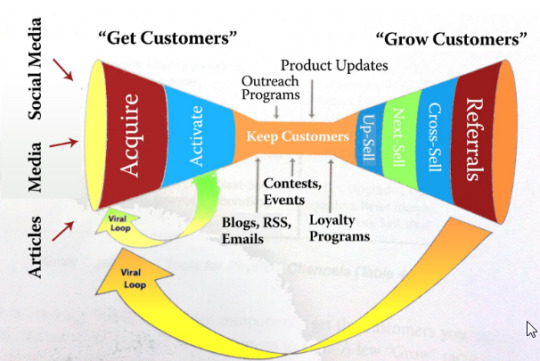
Each of these purposes requires a different type of landing page.
Good landing pages can provide a number of benefits:
They help promote a positive first impression.
Ion Interactive says first impressions are formed in just 1/20th of a second. Landing pages can be customized and designed to help provide strong positive visual impressions quickly.
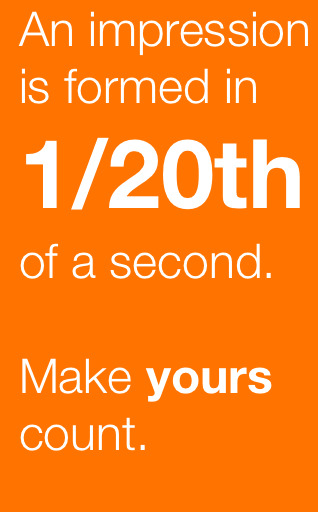
They can take advantage of trust elements.
Landing pages with images, videos and graphics can not only help attract people, but they will help you make a lasting impression.
People only remember 20% of what they read, but they remember 80% of what they see.
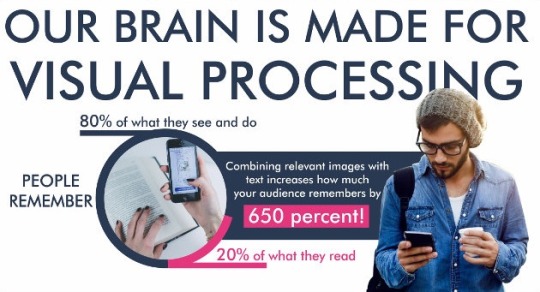
Landing pages promote customer focus.
It’s easier to capture conversions from a well-designed landing page than it is from a homepage or blog post because they have one singular goal. There is less noise to distract your audience.
All of this means that landing pages are the ideal place to get your audience to convert if they’re done right.
Conversion Rate Experts generated $1 million/ year for Moz simply by improving their landing page and doing some email promotion.
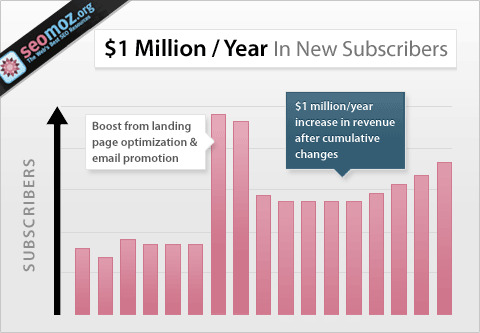
So why are landing pages overrated?
Well, it’s not because they can’t work. It’s just that too often people use a generic template or slap something together that just doesn’t get the job done.
Don’t worry if you’re one of those people. After all, when I started out my landing pages limped along too.
But now I’m going to share with you what I learned and what the most common mistakes are so that you can make sure your landing pages are doing their job.
1. Sync it with your ad campaign
Like I mentioned above, the very first step if to have an effective ad campaign.
You need to be targeting the right audience for your landing page, or nothing else matters.
After all, sending people ready to buy through to a lead generation page is not going to be very successful.
But syncing intent is not the only thing you need to focus on.
Your ad and your landing page need to have a consistent look and feel.
Here’s a great example of consistency:

You can see in this campaign from Highrise that the ad and landing page look very similar.
Here are some of the things they made sure to keep consistent:
The image of the woman is the same.
The theme is the same, including the background color, logo, font, and look of the CTA.
The testimonial is the same.
Now, check out this example:
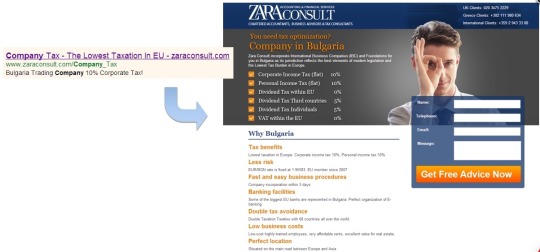
The ad talks about the “lowest taxation in the EU,” then you click through to a page talking about Bulgaria. What?
After reading the fine print, you can see how they tie together but remember that first impressions happen in seconds.
My guess is a lot of people click that end, see a landing page that doesn’t seem to match and instantly hit their back button. I know I would.
2. Make it mobile-friendly
Mobile landing page optimization is vital now that Google has switched to a mobile-first index.
The number of mobile users increases every year. Last year 66% of the population had a mobile phone.
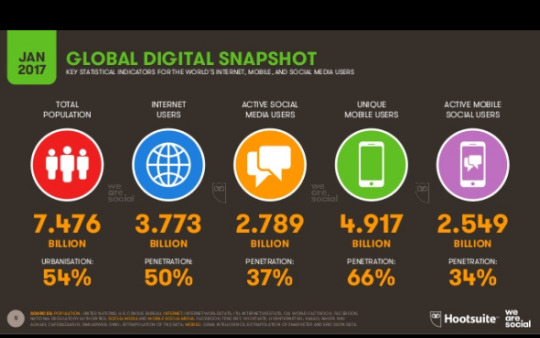
That’s up 5% from the year before. I’m sure when they come out with this year’s stats it will have increased again.
Mobile users are beginning to dominate web traffic.
As of last year, over half of all web traffic is mobile.
Not only that, look at the breakdown by time of day:
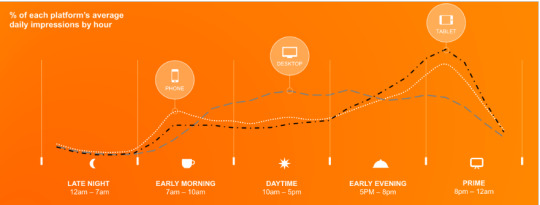
Mobile is dominating the hours when people are typically outside of work.
These are the times people are most likely to be using the web for something other than work, such as browsing the net or shopping.
Which means if you want to capture your audience, you need to plan for them being on a mobile device.
When it comes to mobile traffic, the two most critical aspects of your landing page are speed and simplicity.
Let’s talk about keeping it simple first.
Take a look at these two examples:

It needs to cut out everything but the absolute necessities, and it needs to be designed for mobile.
Having a CTA that’s only partially visible is going to lower your results.
Making it too difficult to read on a small device is also going to hurt your conversions.
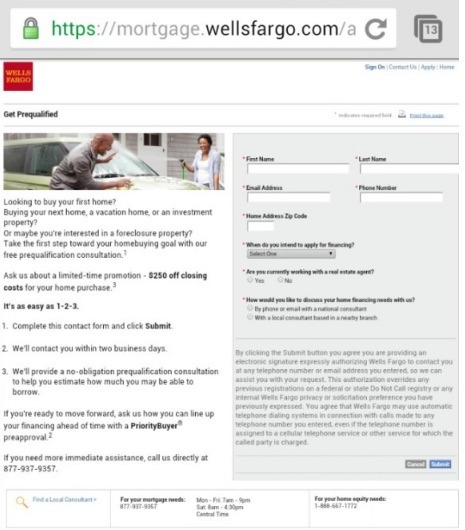
3. Check that your load speed is fast
Page load speed might not be something you first thing of when designing a landing page, but it’s critically important for mobile and desktop traffic.
In fact, Google announced in January that starting July 2018 pagespeed will become one of their ranking factors for mobile searches.
40% of your audience will leave your landing page if it takes longer than three seconds to load.
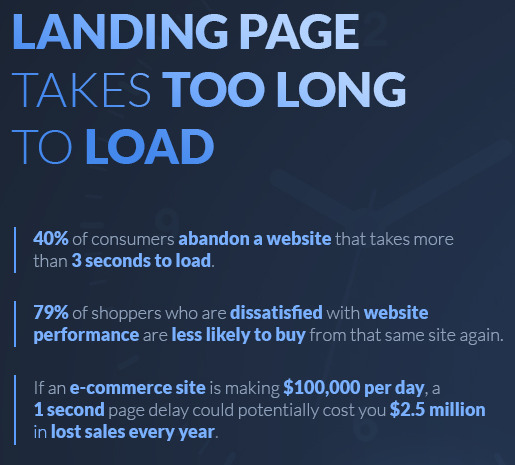
It won’t matter if you get every other step right if no one ever hangs around long enough to actually view your page.
A lot of businesses are struggling with this, especially for mobile.
According to Google, the average time it takes to load a mobile landing page is getting better, but it stills takes an average of 15 seconds.
I just told you 40% of people will leave if it takes longer than three seconds.
When you isolate mobile traffic, that number actually increases to 53%.
So over half your audience will leave in three seconds or less and the average site takes 15 seconds…
Simply fixing your page speed could have a huge effect on your conversions without changing any other thing about your landing page.
Google also found that bounce rate continued to increase the longer page load took.
Here are their findings for mobile traffic:
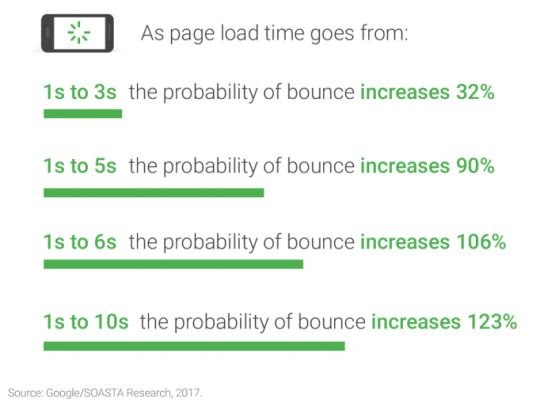
How do you know if your page is too slow?
For desktops, you can test with Google’s PageSpeed Insights.
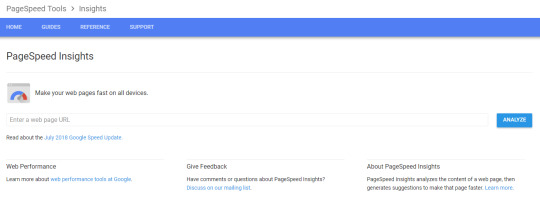
For the mobile version of your site try Test My Site.
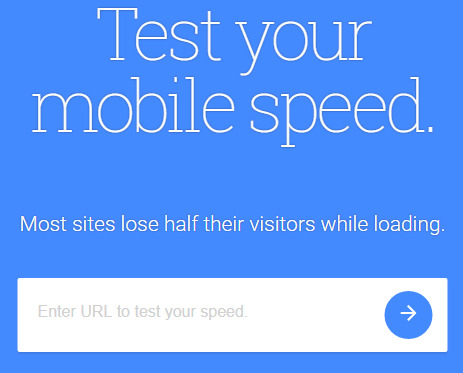
If your speeds are not where they should be, then make sure you take the right steps to boost them before worrying about anything else.
4. Make sure your headings work
Once your page loads, one of the first things your audience will notice is your heading and subheading.
When thinking about landing page design, always keep in mind that first impressions count.
Your headline is one of your first impressions. It needs to be clear, attention-grabbing and reflect the purpose of your page.
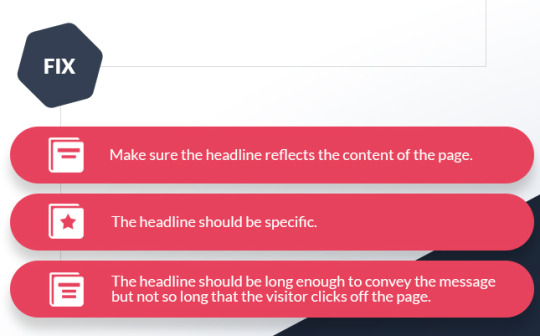
Check out this headline:
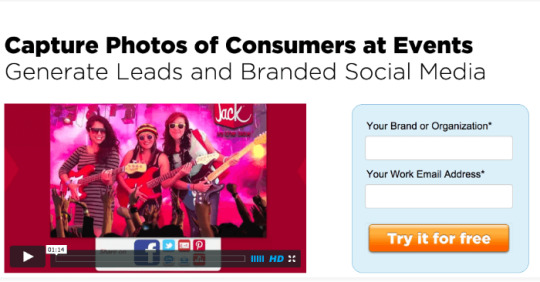
It’s simple, straightforward and you know what they’re selling.
Their subheading reinforces the message and adds more information, without being too long or distracting.
Now take a look at this one:
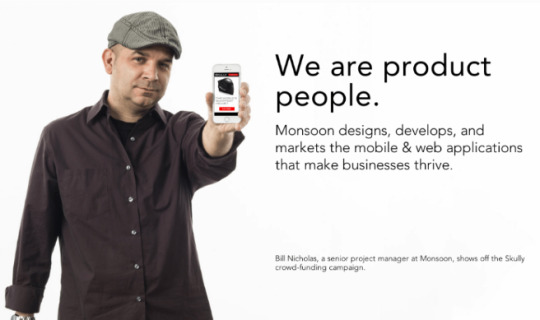
The title is catchy, but it doesn’t give you any idea what the product is.
The only thing that saves this is the subheading is perfect. It provides the context that they’re missing in the headline.
The subheading needs to complement and build on the main heading.
Its purpose is to give your readers a little more information while keeping them engaged and enticing them to continue down the page.
Check out Slack’s homepage:
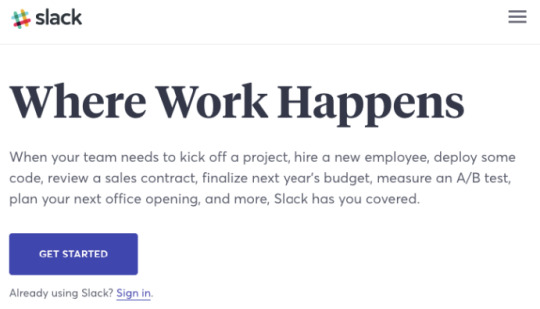
While this is actually a homepage, it captures the key aspects of headings that you should use on your landing pages.
5. Remove all the distractions
One of the key distinctions of landing pages is that they only serve one purpose.
Even though Slack’s homepage is pretty clean, it would fail as a landing page for a couple of different reasons.
The first is that, like any homepage, it has distractions.
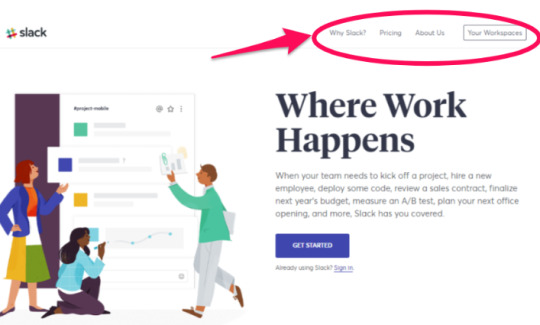
Your landing page shouldn’t have a navigation bar.
Why?
It’s been shown that removing the navigation menu on your landing page can increase your conversions by 100%.
But only 16% of landing pages don’t have navigation bars.
This is a simple fix that more people should be taking advantage of.
Another way you’re distracting your audience is with too many words.
There’s a direct correlation between lower word counts and higher conversions, especially in the health and travel industries.
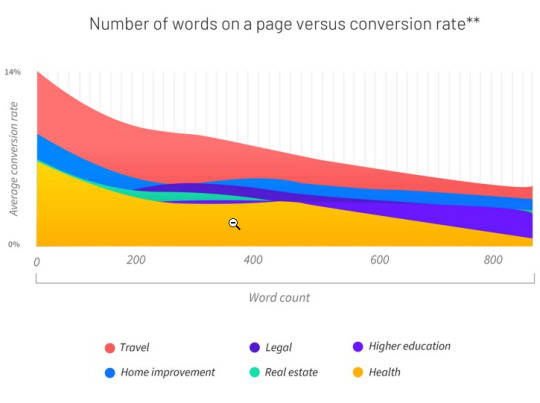
Don’t put too much text on the page. Keep it as visual as possible with bullet points or infographics.
You need to include enough information to make it clear what problem you’re solving for your customer, but in as few words as possible.
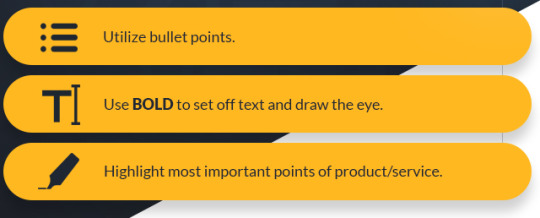
I know it’s a bit of an art, which is why it’s crucial to test your landing pages (we’ll get to that later).
6. Use the right CTA
A landing page should have one call to action.
Over 68% of businesses have five or more CTAs and links on their landing page, yet stats show that having only one CTA boosts conversions.

Choose one specific goal and CTA for each landing page and stick to it.

Make sure that your call to action is relevant and consistent with your offering.
Using something vague such as “click here,” “submit,” or “continue” will not convert as well.
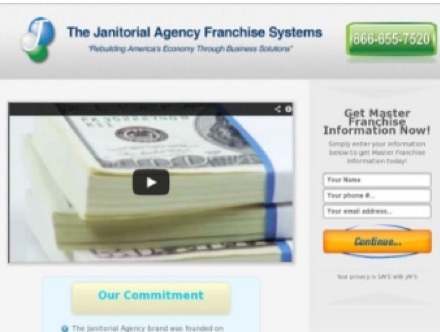
Your CTA is the whole reason for a landing page. It is the most important element.
You need to make it stand out.
Choose a bright color, make it a large button with a bigger font.
Draw attention to it, with arrows or other visuals. You want your audience’s’ eyes to be drawn to it naturally.
7. Limit what you ask for
Landing page abandonment can happen in the same way as cart abandonment.
One of the big triggers for abandonment is asking too many questions.
Most companies want to get as much data as possible. However, there are conflicting results when you reduce form fields.
You don’t necessarily have to limit form fields to some artificial number. But you should just focus on what’s important.
For example, asking your audience for their age immediately drops your conversion rate.
There’s often no point in collecting that data up-front!
Here’s a simple example from Optimizely:
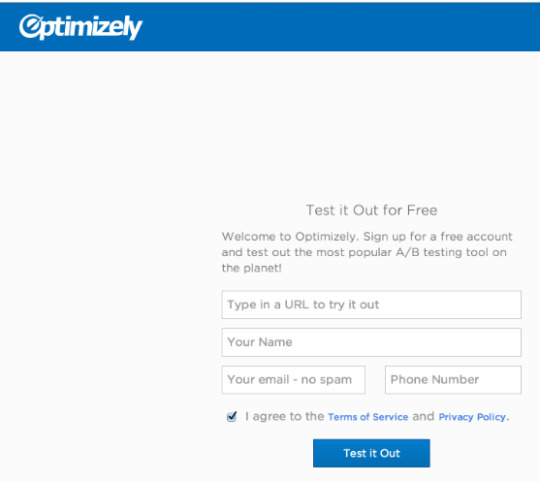
You can also use interactive screens, like Oscar Health, to break up the questions.
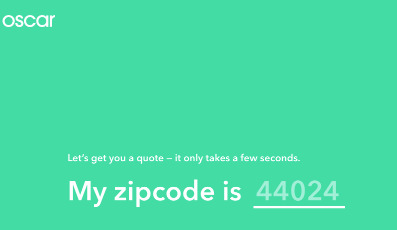
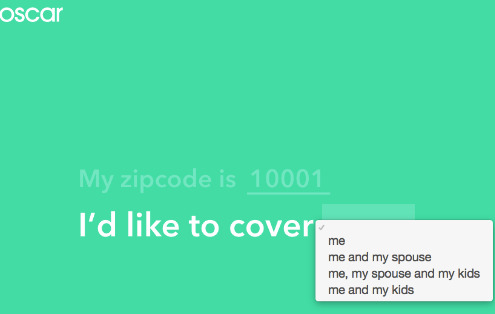
This increases your chances of your audience interacting and completing the form fields without abandonment, since it breaks up the fields, making it seem like less.
Consider adding a progress bar so that your audience knows they’re getting close to the end and the screens don’t actually go on forever.
Also, keep in mind our fields need to be optimized for mobile. If it’s painful to do on a phone, people will flee.
8. Have the right visuals
First, I should be clear that visuals aren’t just images anymore.
I’ve seen video landing pages convert at 56%!
Here are just some of the benefits of putting a video on your landing page:
They increase audience retention. An engaging video keeps people hanging around longer, which allows your message to penetrate.
They also increase trust. Assuming your video includes a real person, it gives your product a life and voice. This will immediately increase your audience’s trust.
Your audience wants to watch videos. Unbounce found that people prefer to watch a video over reading an article, as long as the video is 5 minutes or less.
If you’re going to incorporate a video, make sure you embed your call to action within it (as well as elsewhere on your landing page).
Take a look at how Derek Halpern included his CTA:
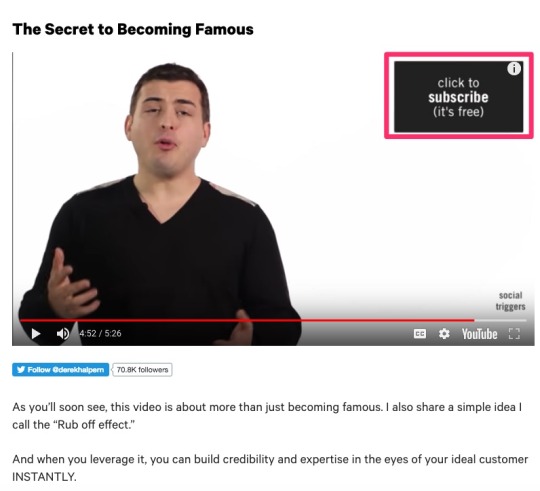
Videos are also a great way to demonstrate your product.
If you have something that is difficult to assemble or use, videos are ideal.
For example, Long Tail Pro includes a video that walks you through exactly how to use their software.

Don’t make it too long; keep your video short, to the point, and useful.
Any images on your landing page should be relevant to your product or service.
Try to choose pictures that meet the following criteria:
They should be large.
They need to be relevant to your product or service. Make sure that if you sell a product, there is an actual picture of it on your landing page.
Don’t ever use stock images.
All your images need to be high-quality.
Including an image of a person looking directly at your call to action is an easy way to boost conversions instantly.
Here’s an example:

When we see someone looking at something, we’re naturally drawn to look at it as well.
It’s a simple yet effective way to direct the attention of your audience to where you want it.
9. Include reassurance and testimonials
Want to hear something controversial?
The best salesperson in your company isn’t actually the best in my experience.
Instead, the best salespeople are often your past customers.
People want to hear from other people’s experience.
That’s why always make sure to use clients’ testimonials on every single landing page I create.
Testimonials help to build trust in your personal brand. People trust other people more than they trust a company.

More than three out of four marketers don’t include social proof, yet it can boost your conversion rate by more than 1%.

1% might not seem like a lot, but the average landing page conversion rate is only 2%.
If you’re new and don’t have many testimonials yet, there are other ways to reassure your customers.
Consider showing your trust indicators to reassure users that your site is safe.
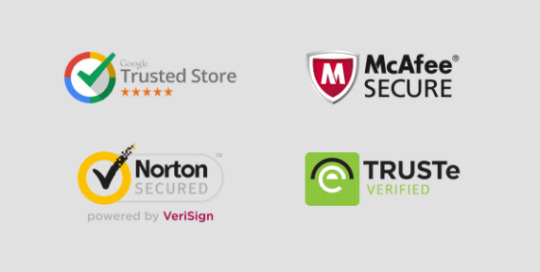
You can also build trust by sticking to the facts and using precise numbers whenever you state any statistics.
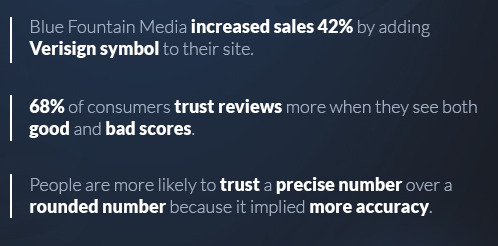
Make sure you don’t overstate results.
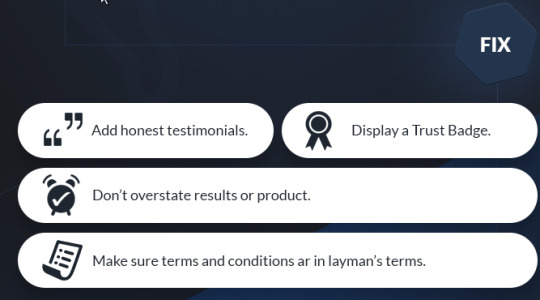
Saying something is the best without backing it up will make people think you’re trying to trick or scam them.
Avoid superlatives like “best,” “fastest,” “cheapest” unless you can prove it with research.
Another way to reassure customers is by offering a guarantee.
Free trials or money back guarantees help build trust and boost conversions since they’re low risk.
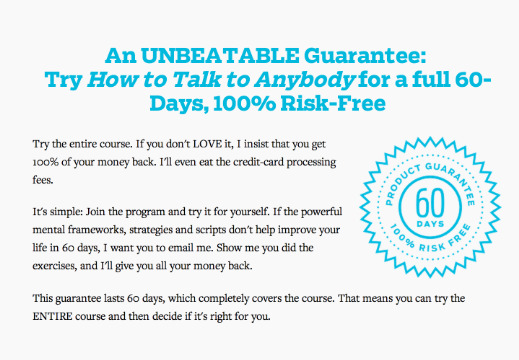
You can also increase customer confidence by providing contact info.
SImply giving people a way to reach you can help reassure them your site and product or service is trustworthy.
10. Add a little pressure or incentive
An additional incentive to encourage customers to click your CTA can help boost conversions, particularly if your landing page is for lead generation.
Offering a free e-book or guide can help increase sign-ups.
Just make sure the content you provide is valuable, or any future marketing efforts toward these people won’t work well.
Whatever free gift you choose should be seen as an investment toward later paid conversions.
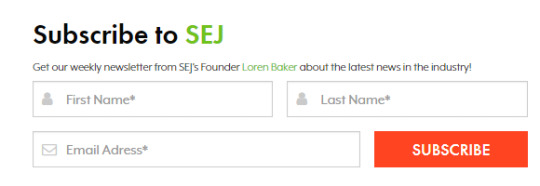
Remember the old saying about the carrot or the stick?
The gift is a carrot to entice conversions. You can also use a stick or “threat” to scare people into action.
Now, I don’t mean a real threat.
I mean use language such as “limited time offer,” “only 24 hours left” to increase your conversion rate.
11. Test, test, and retest
There is a science to landing page structure, but there is also an art to it.
To find the best landing page design for each of your campaigns you need to test them.
Many marketing blogs will rave about long-form landing pages. But guess what? Those don’t always convert the best.
The catch is that some companies, like Conversion Verve, have found that shorter pages actually converted better for them.

So even when you read about what works best on average, it doesn’t mean it will work best for you.
Sadly, barely half of companies actually test their pages today.
But testing has proven to boost conversion rates.
The companies whose conversion rates have improved year over year are executing 50% more tests on average.
A good way to test your pages is with heat maps.
A heat map gives you a simple visual of where your visitors are looking and clicking when on your landing page.
You can see what areas of your page people are paying attention to and what’s not working.
Of course, I’m a little biased, but my preferred heat map software is Crazy Egg.
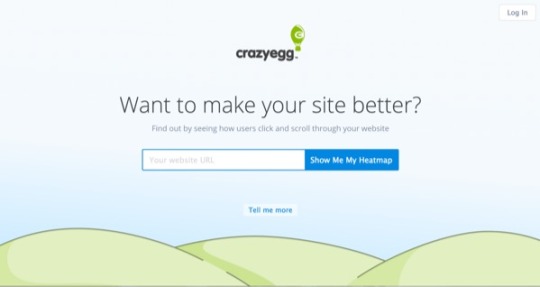
All you do is enter the URL of your landing page, create an account, and check out your heat map.
Here’s an example of a scroll heat map:
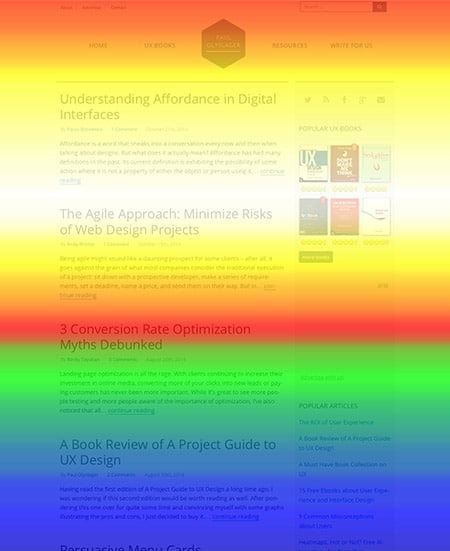
The areas in red are getting the most attention.
In this example, you can see that not a lot of people are making it down to the bottom.
If your CTA were at the bottom, this would be a problem.
You can use heat maps to see where people are clicking:

Heat maps can quickly show you if your headlines, content, or CTAs aren’t getting enough attention.
Conclusion
Landing pages are often expected to convert people effortlessly, yet the average rate is around 2%.
Of course, the problem isn’t with landing pages exactly. It’s with how they’re being built and used.
A landing page needs to have one singular goal, and every part of it needs to be designed to move viewers toward that goal.
First, make sure your landing page is consistent with your campaign, then make sure it’s optimized to be fast and mobile-friendly.
Your headings need to be attention-grabbing, and all distractions, noise, and clutter need to disappear.
Use an effective CTA and limit the amount of information you ask customers to provide.
Make sure you use great visuals and provide social proof or guarantees to reassure people it’s low risk to convert.
Remember, you can always offer an incentive or a little pressure to encourage people to click the button.
Finally, always make sure to test your pages. Use A/B testing or heat maps to see what’s working and improve what isn’t.
What tips or tricks haven’t I mentioned that helped boost your landing page conversions?
About the Author: Neil Patel is the cofounder of Neil Patel Digital.
from Search Results for “analytics” – The Kissmetrics Marketing Blog https://ift.tt/2jIkBJo #Digital #Analytics #Website
0 notes